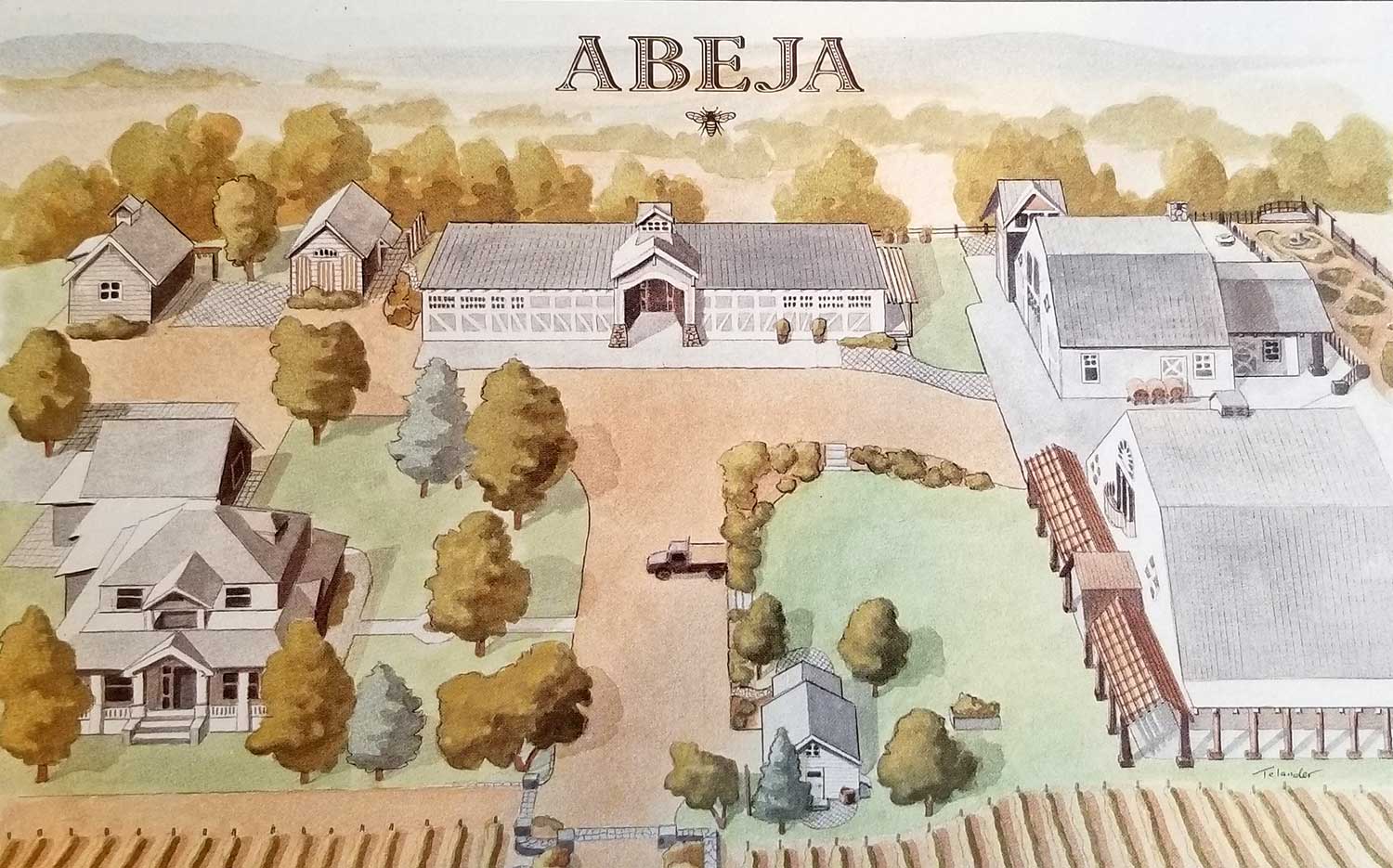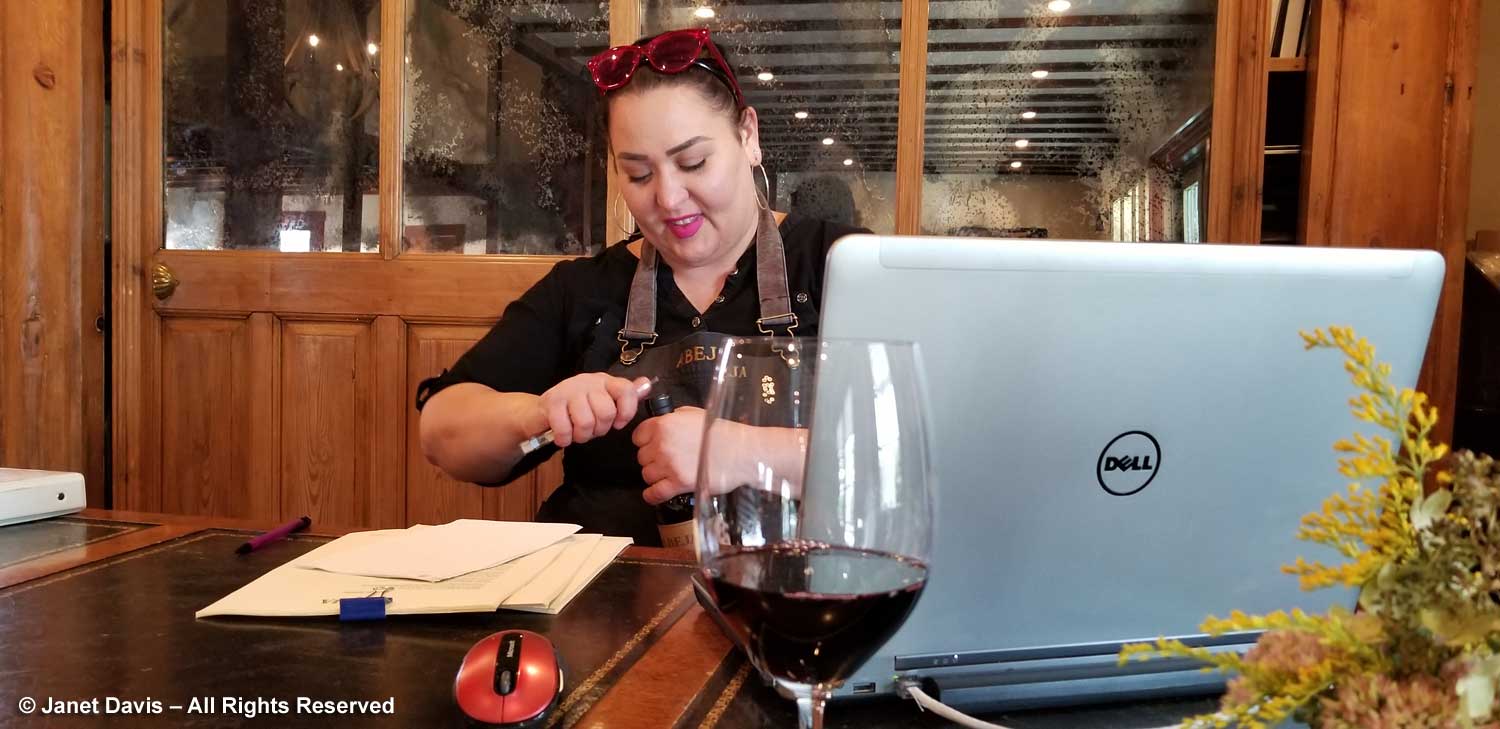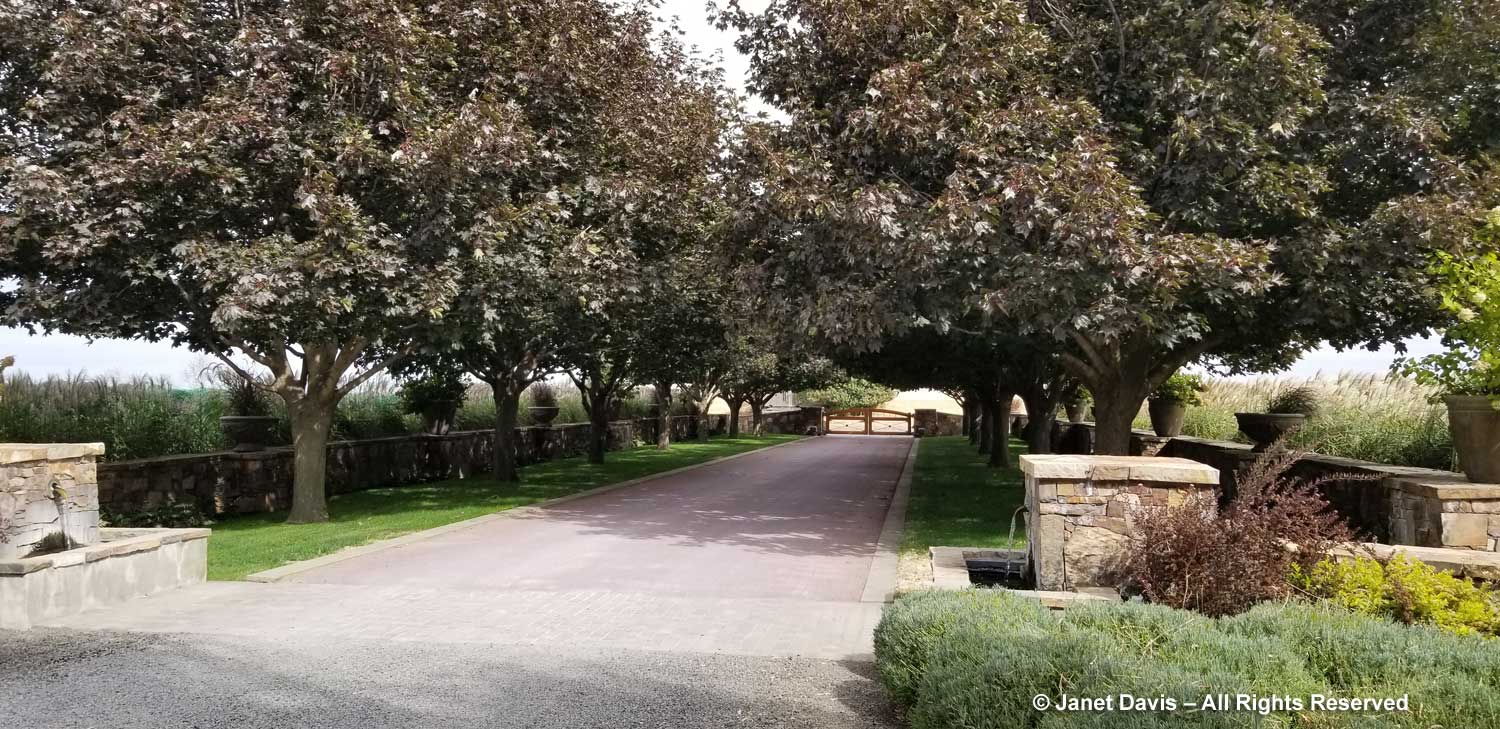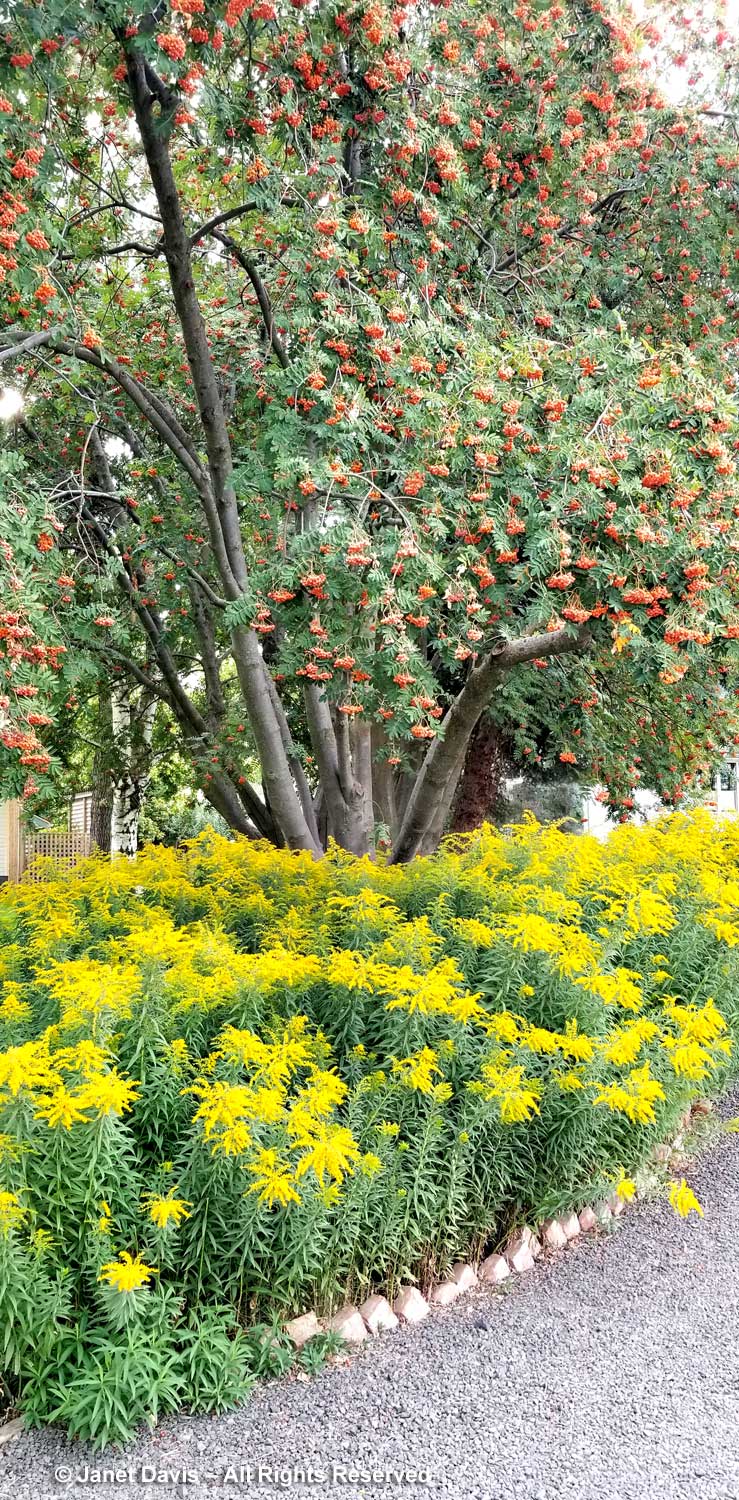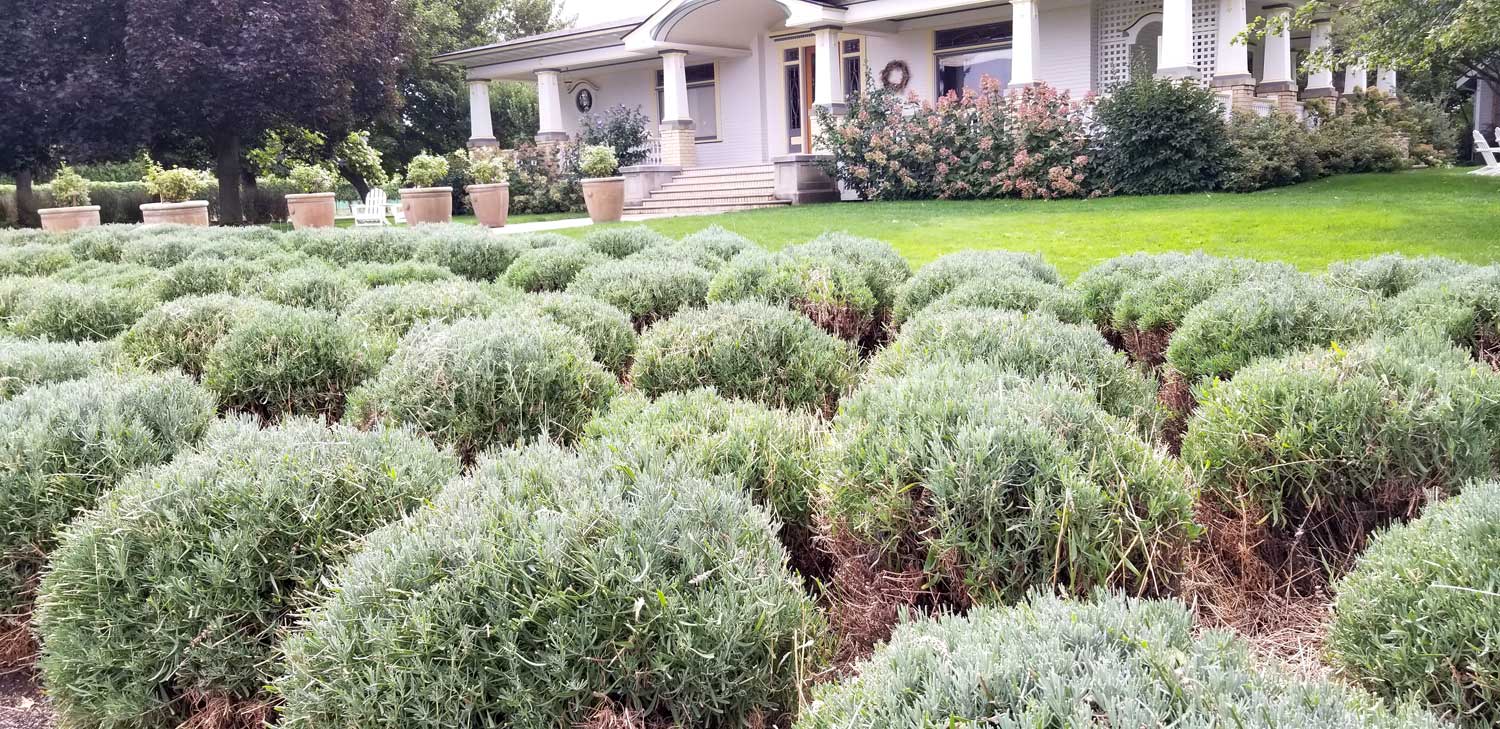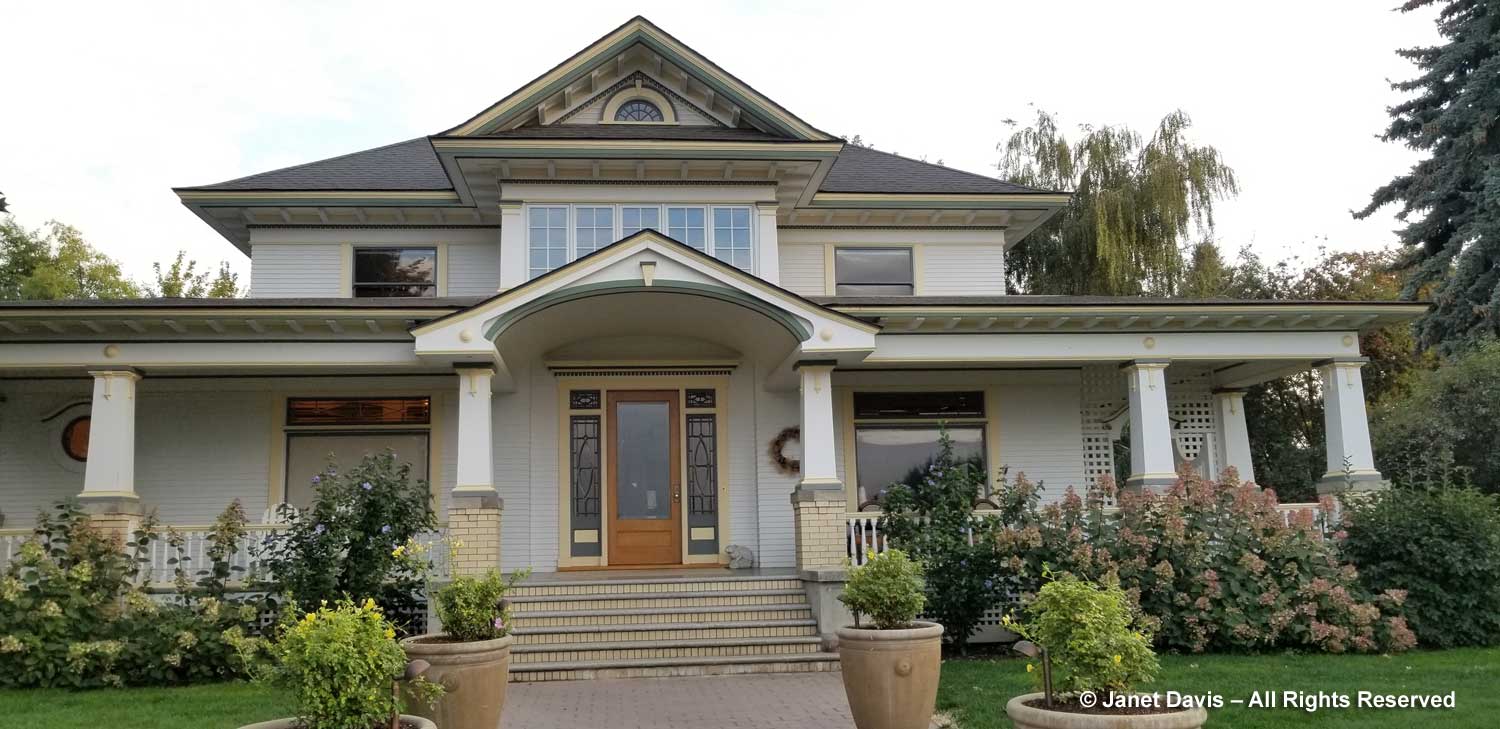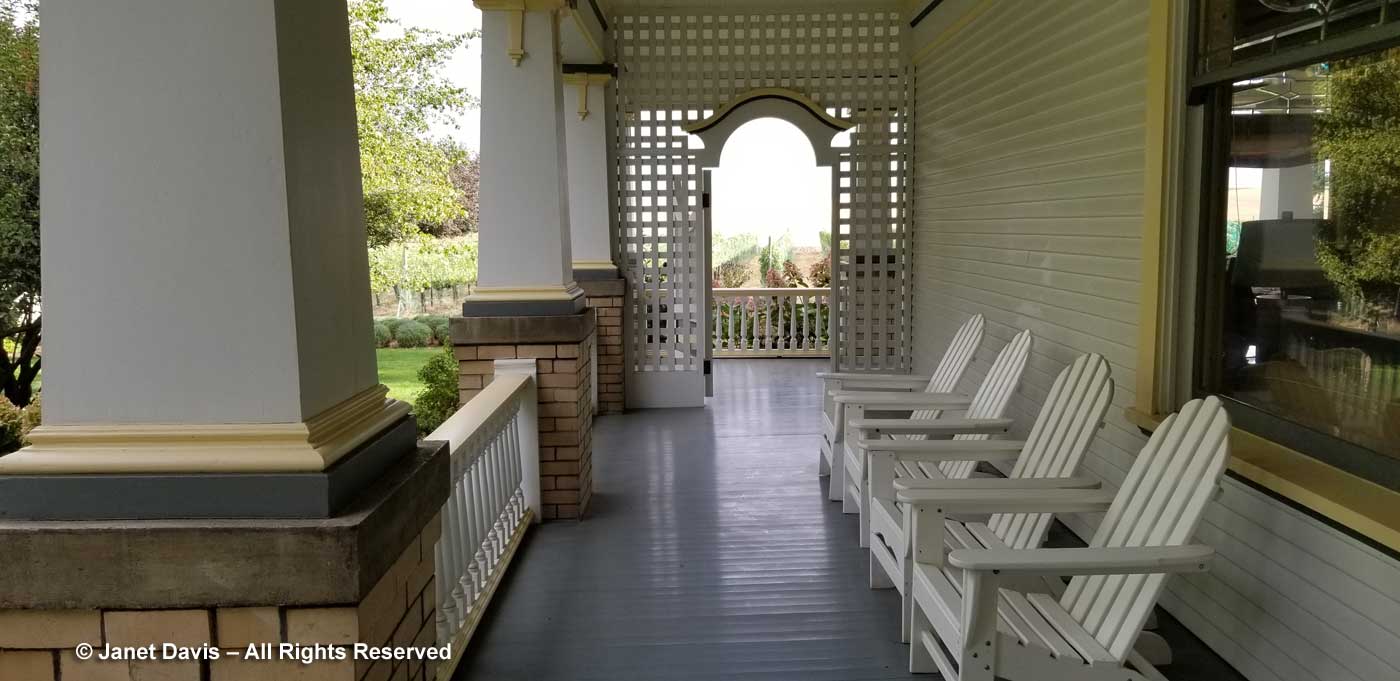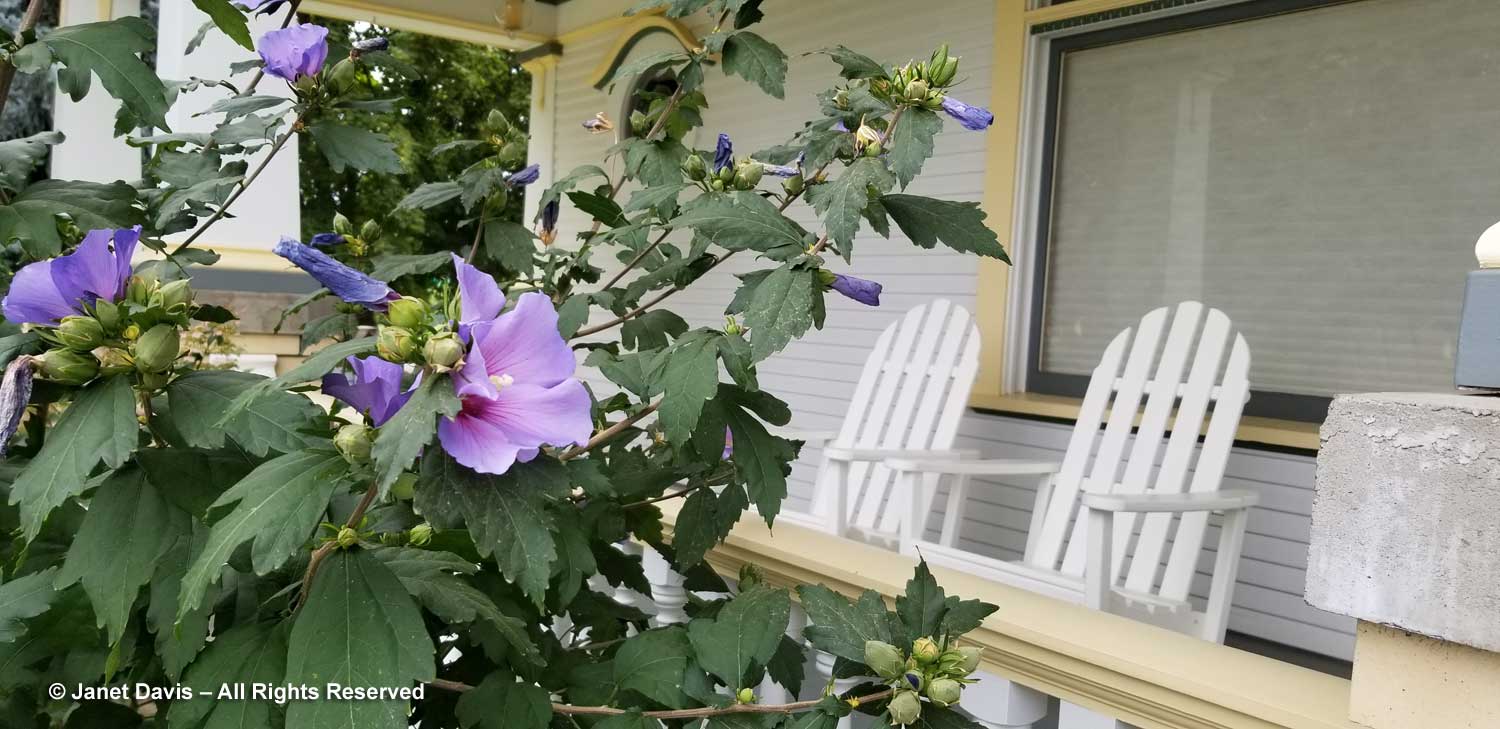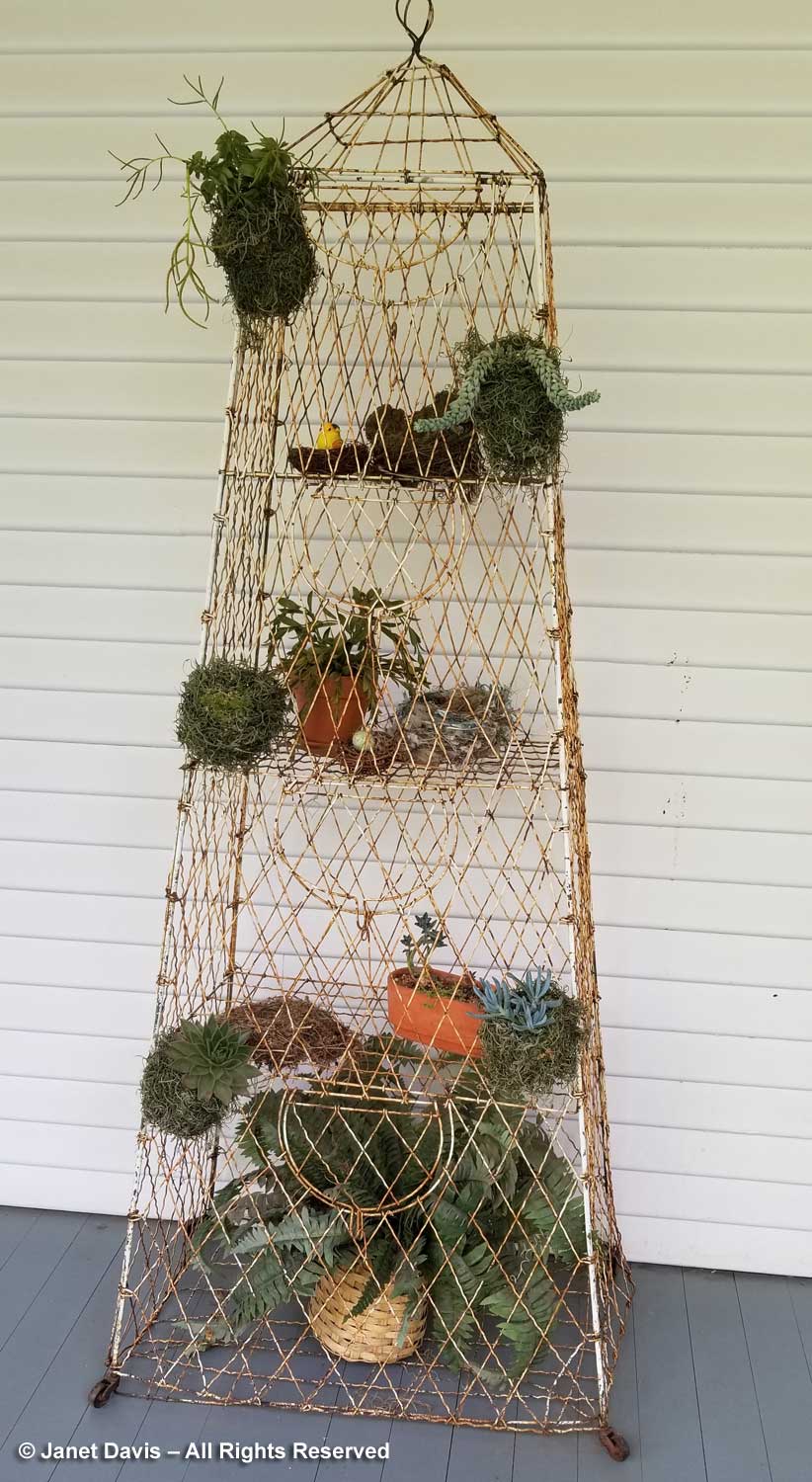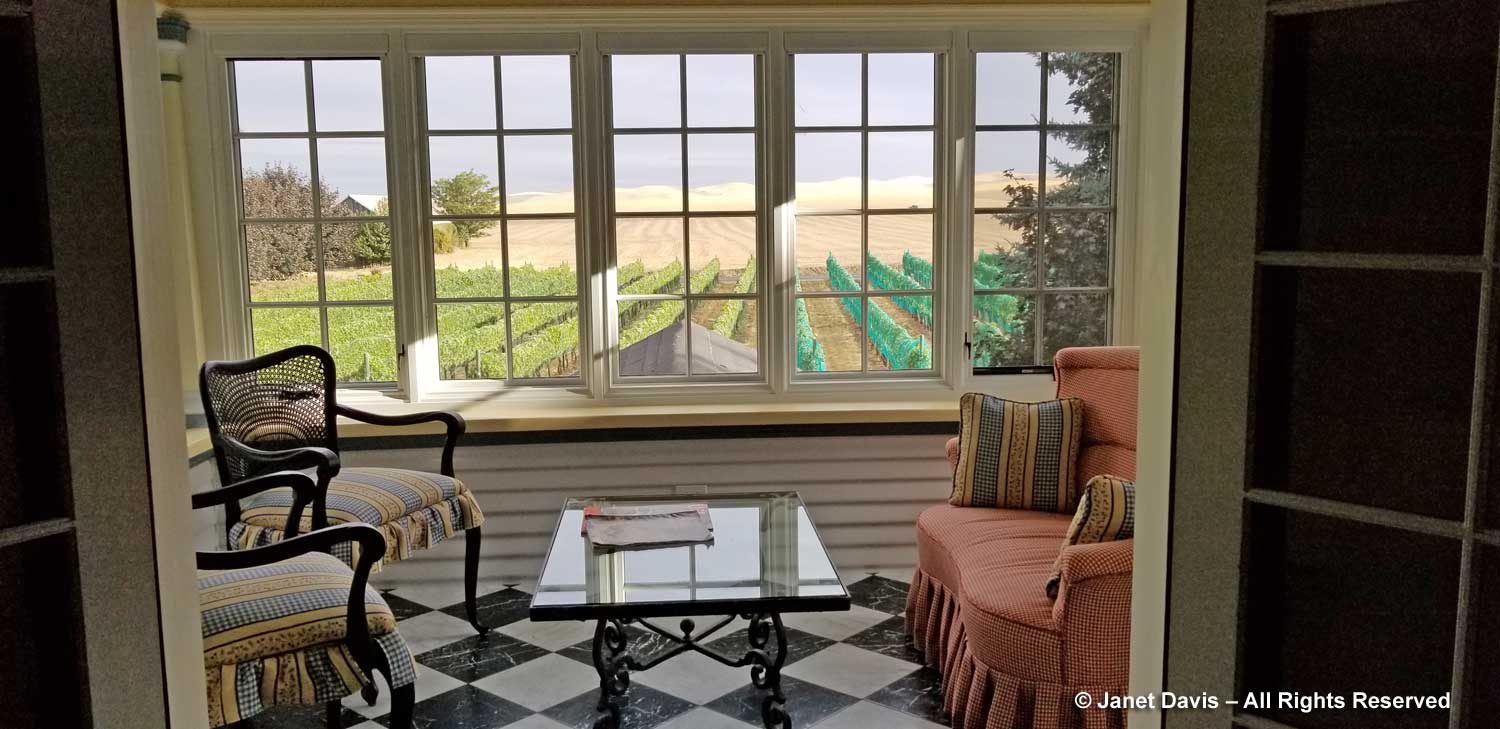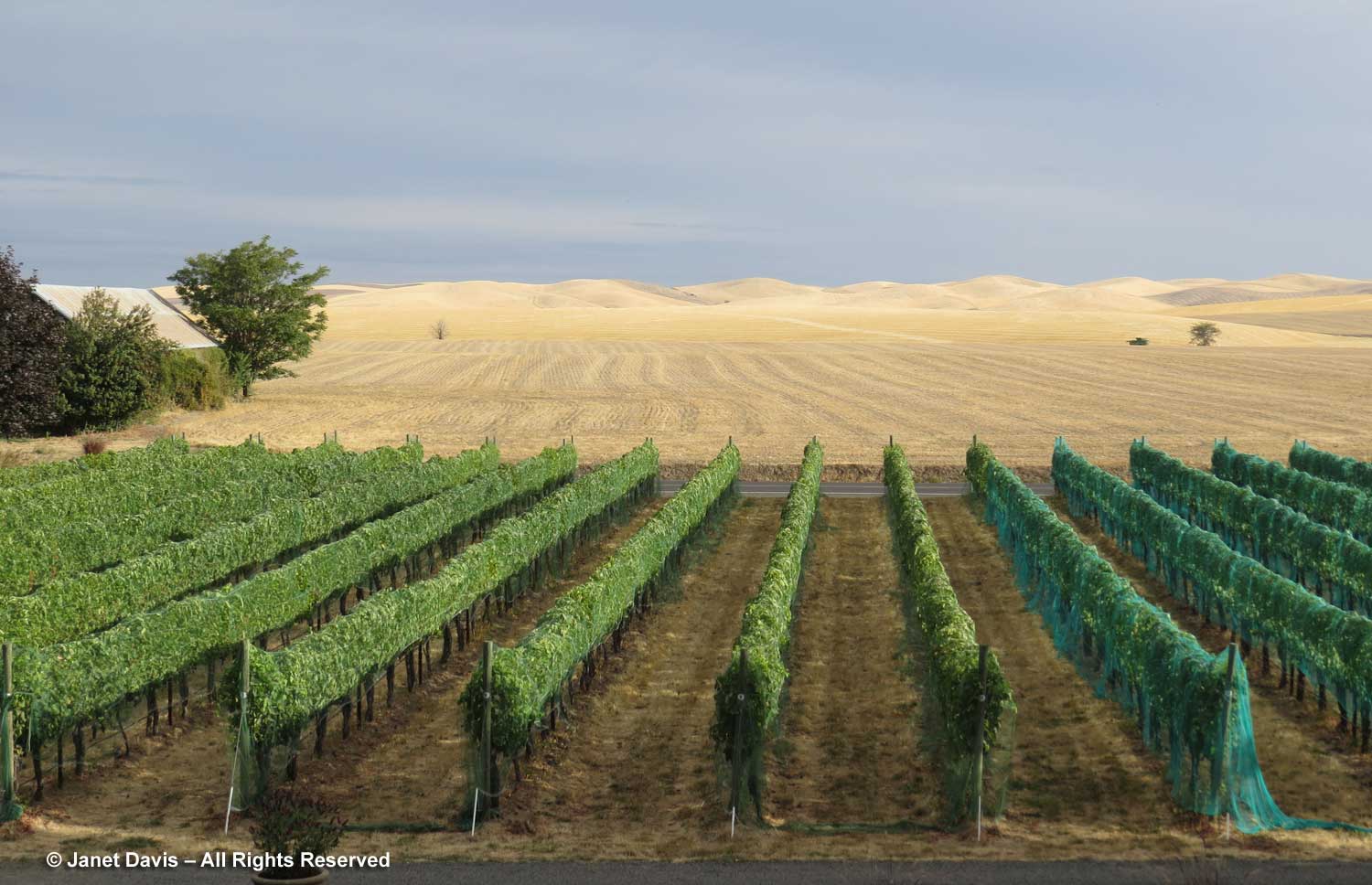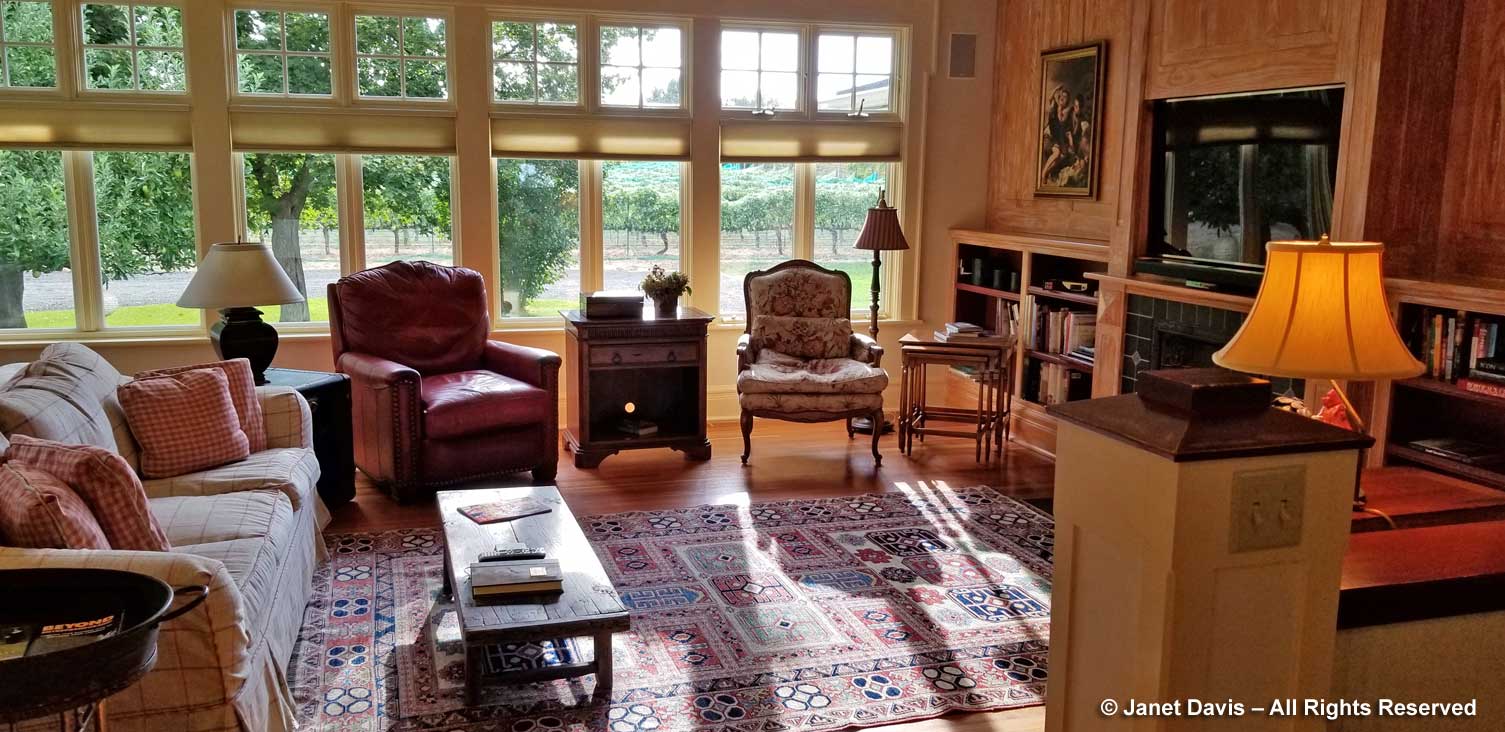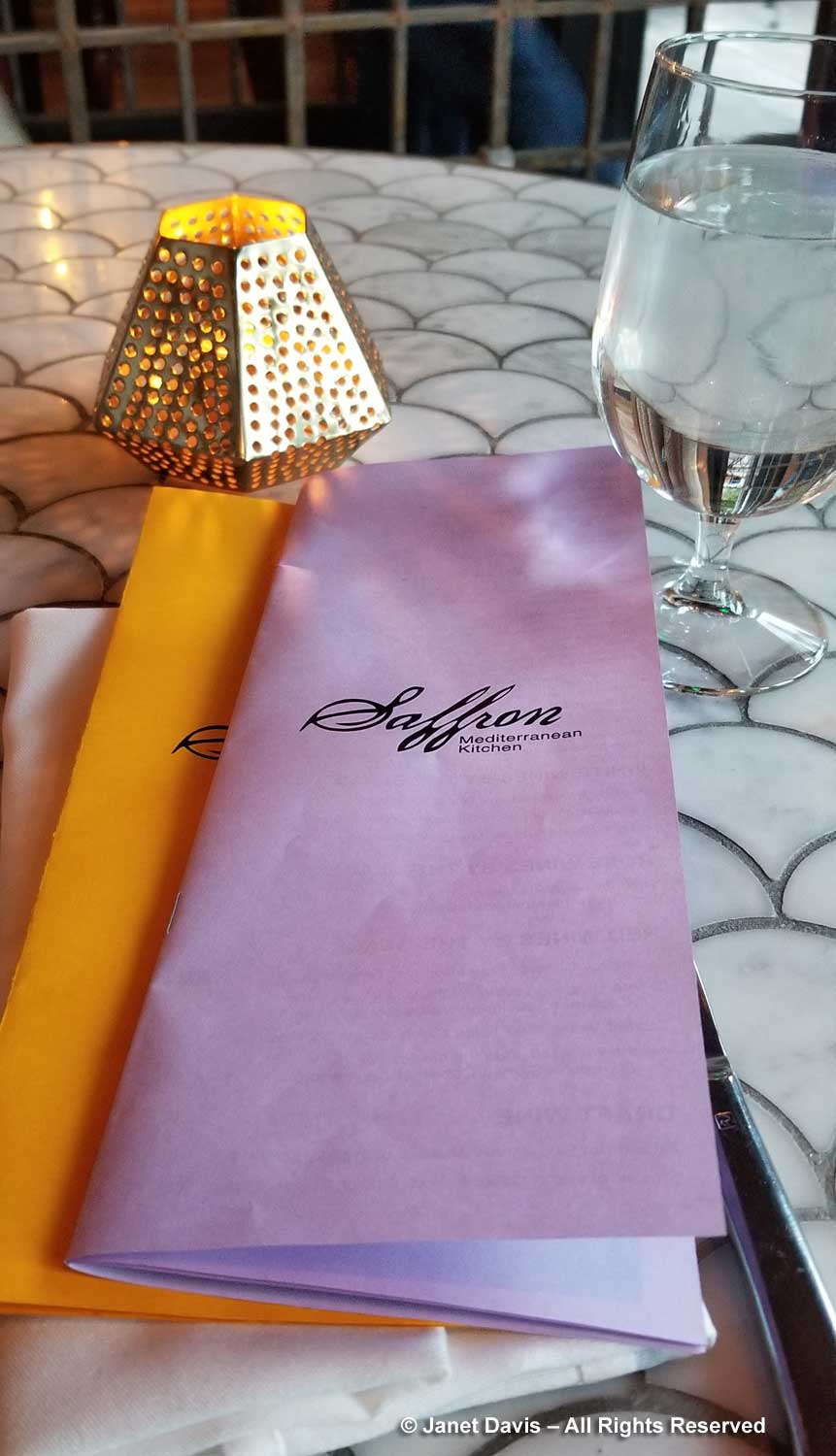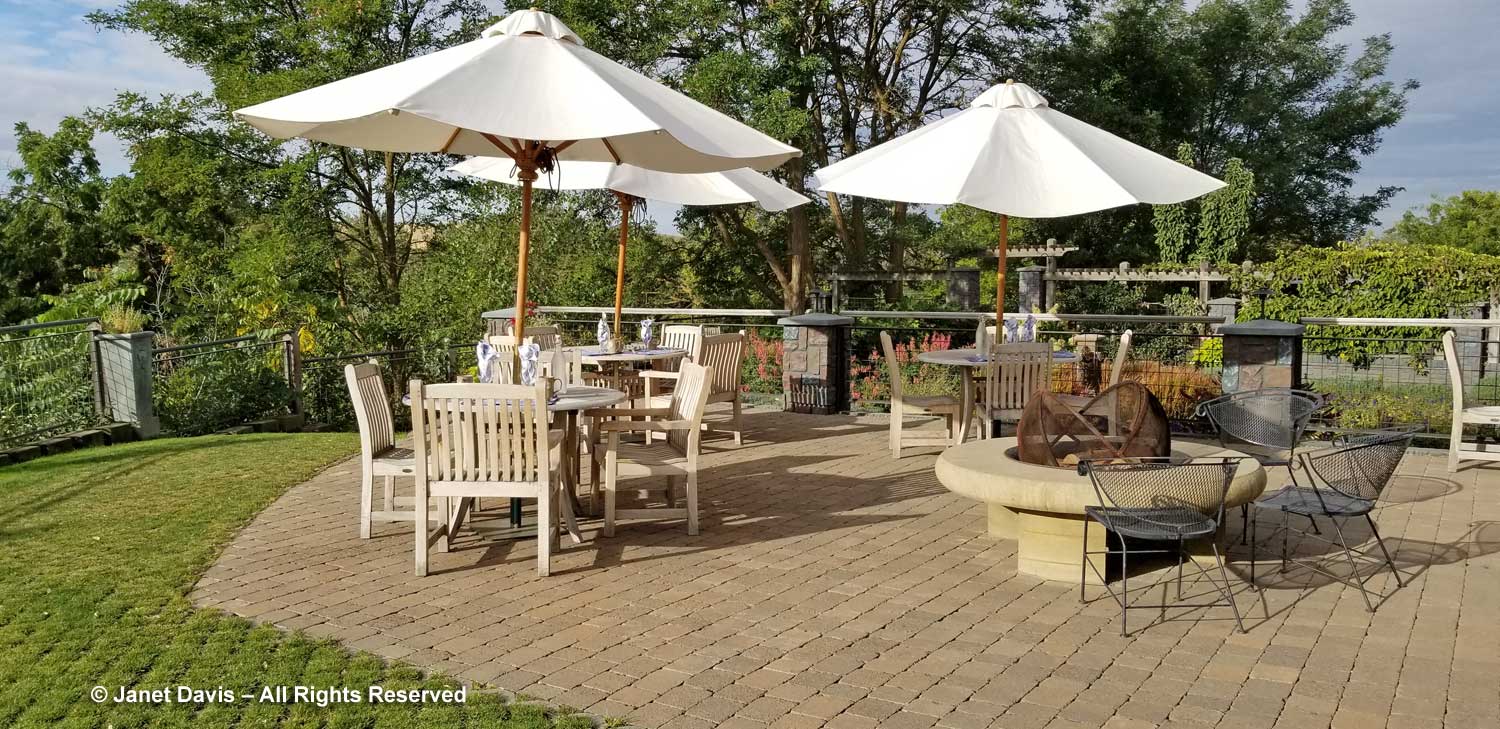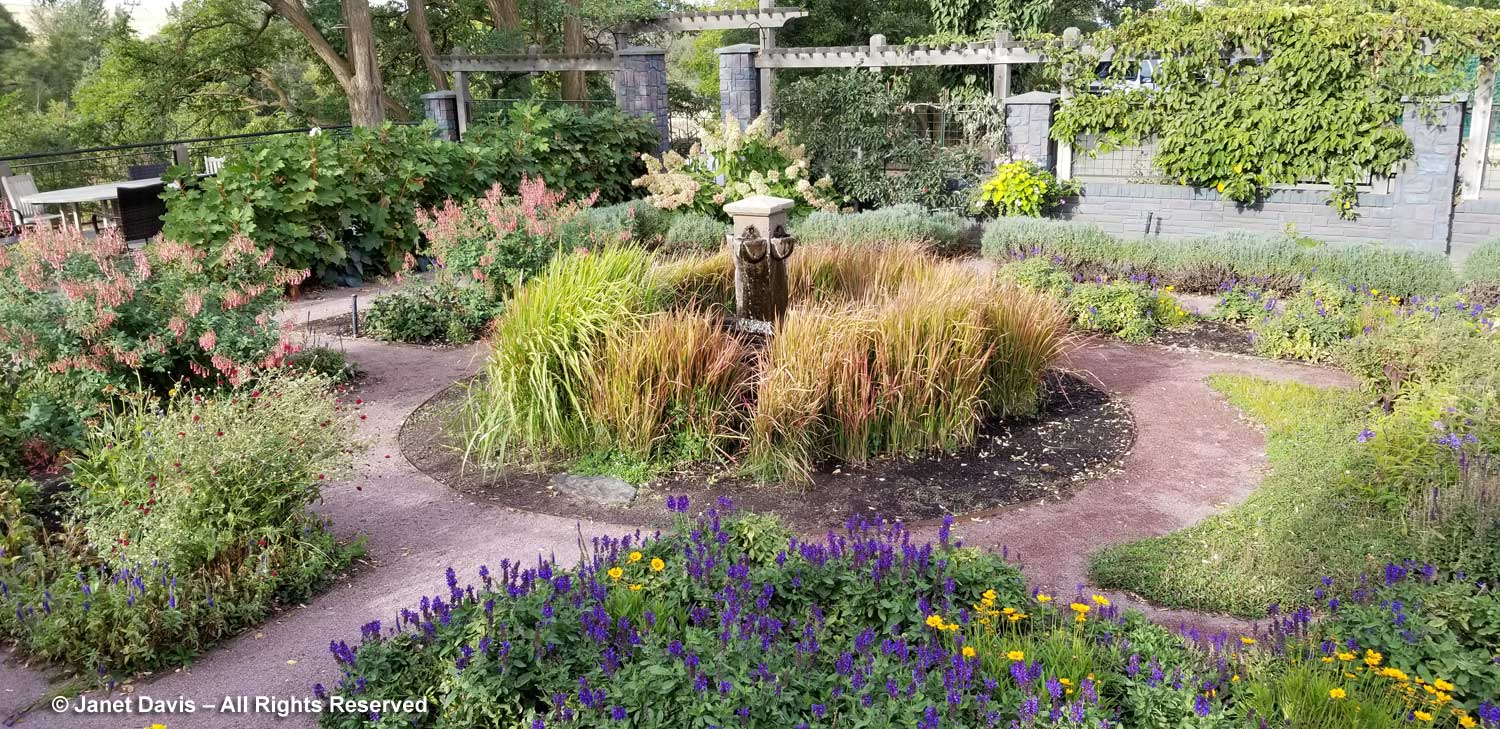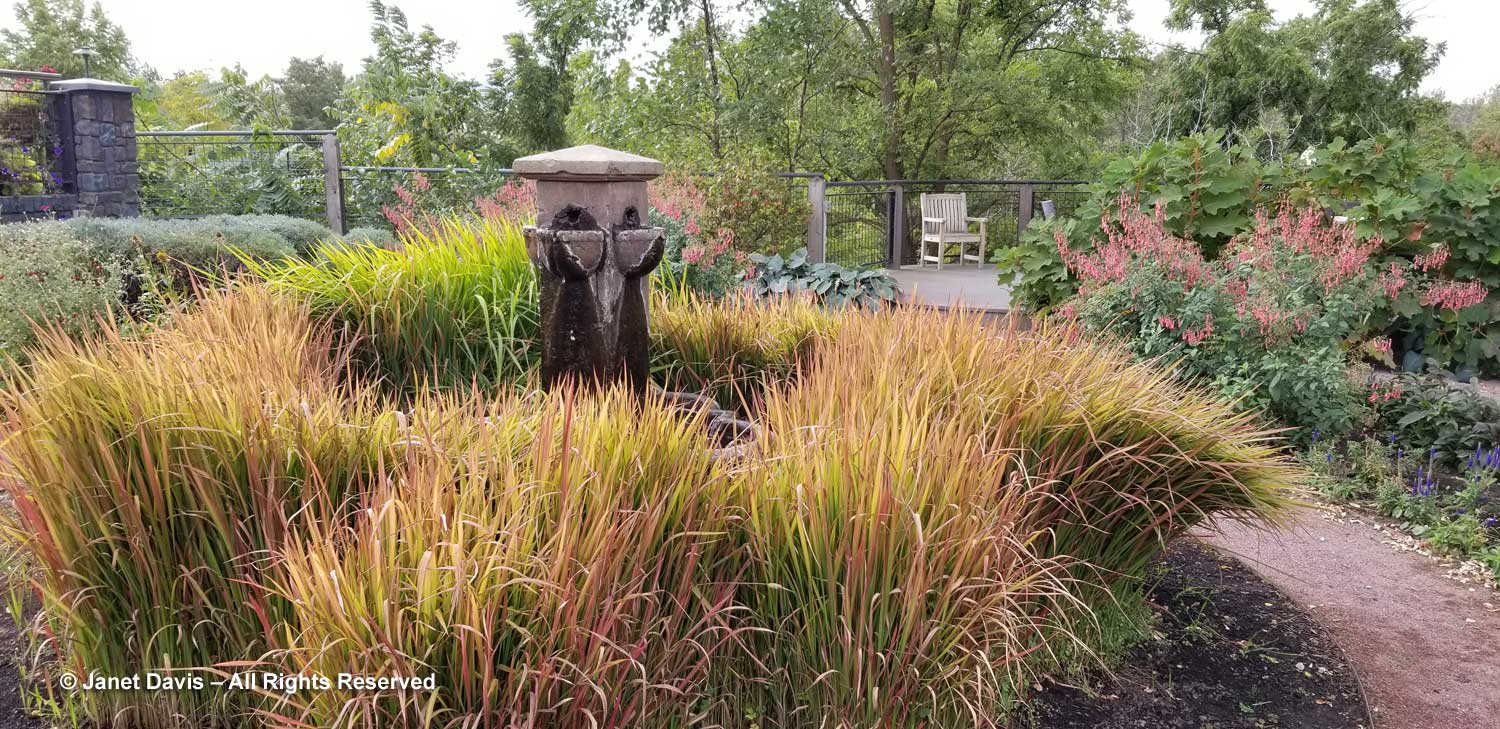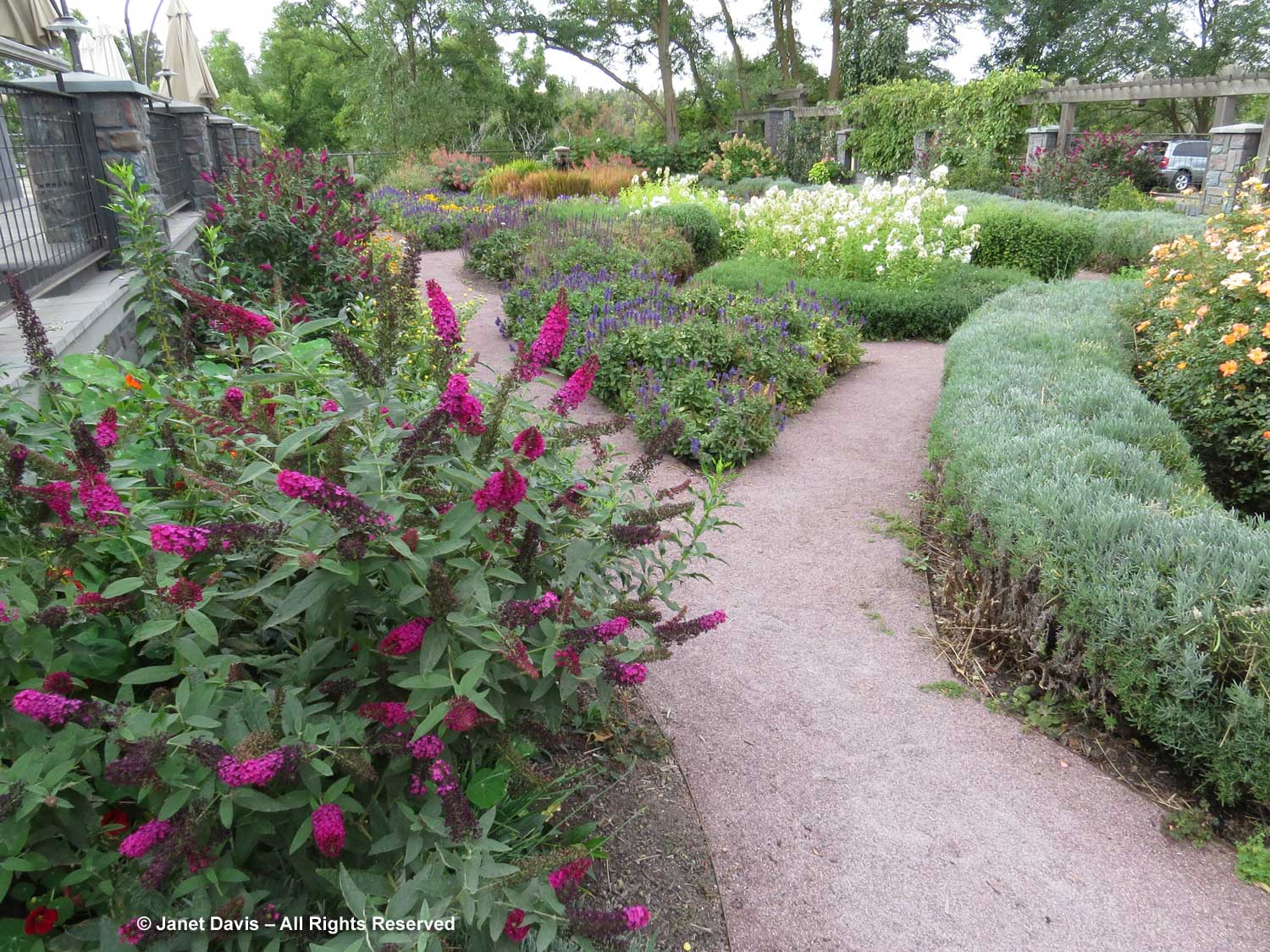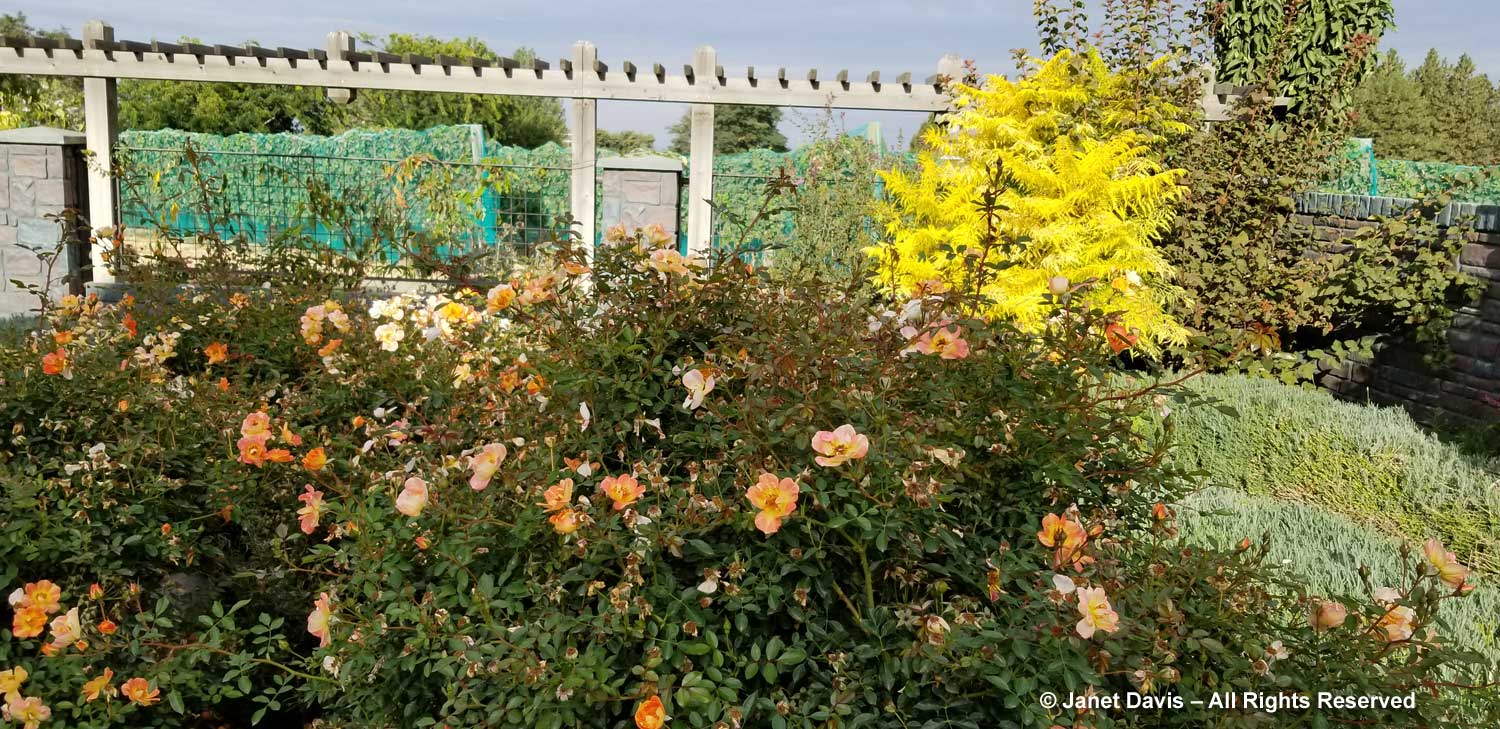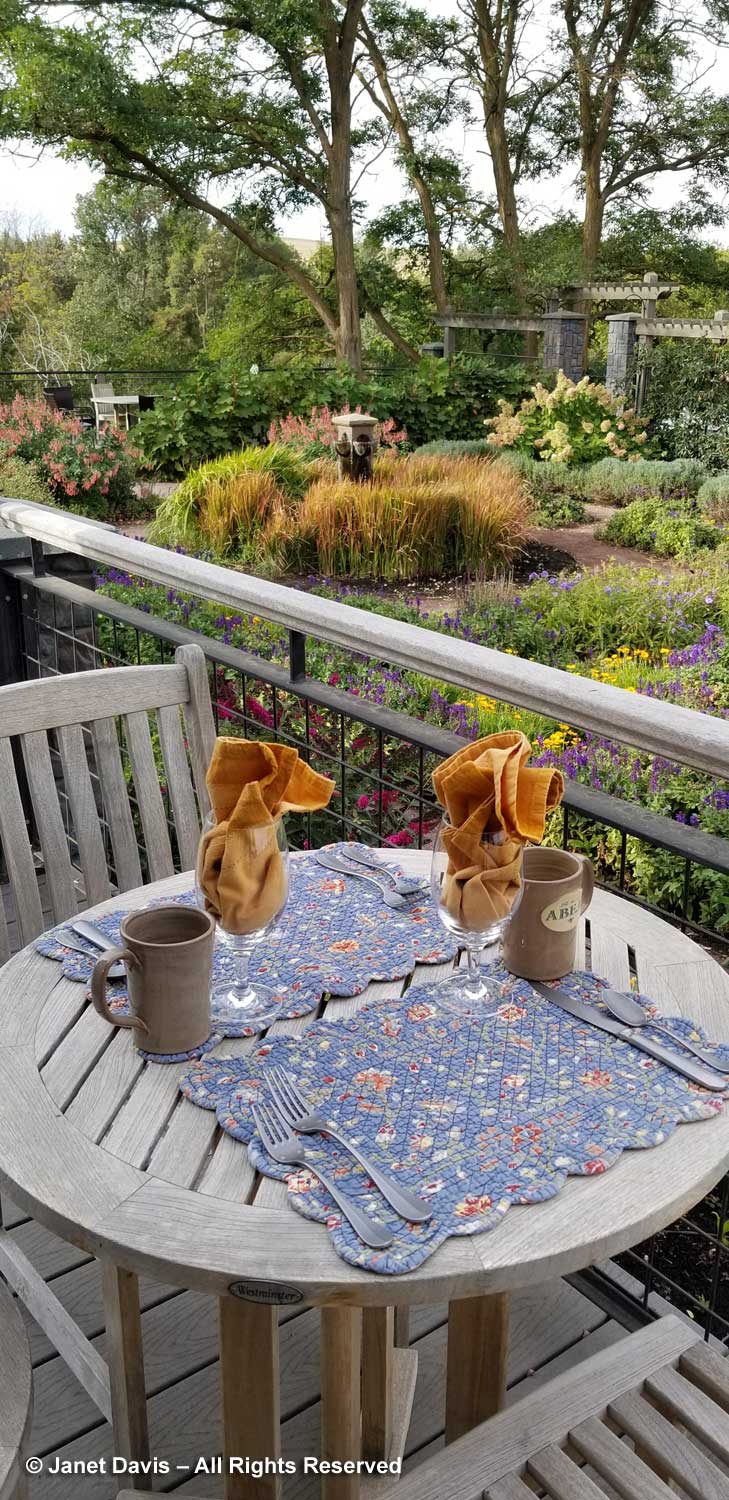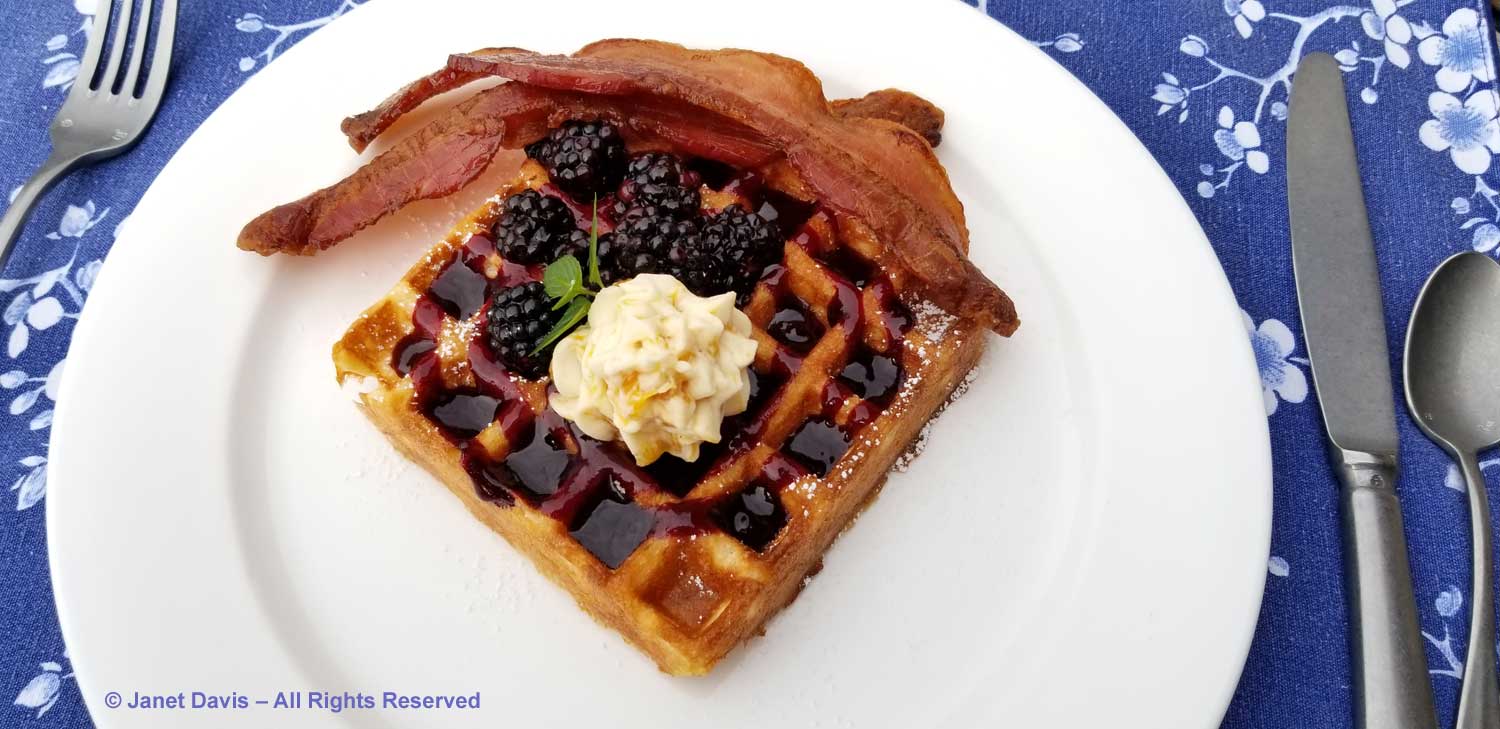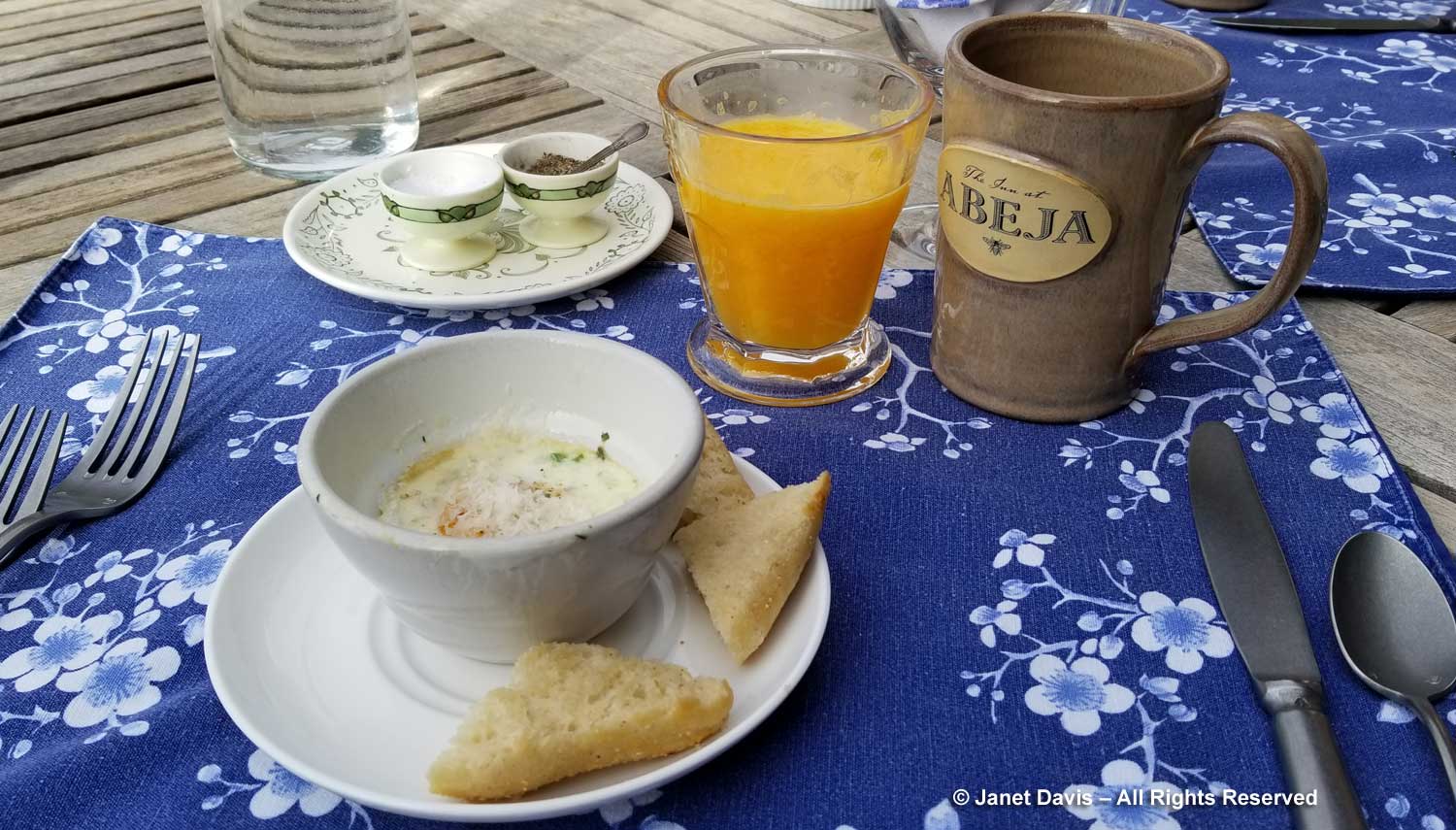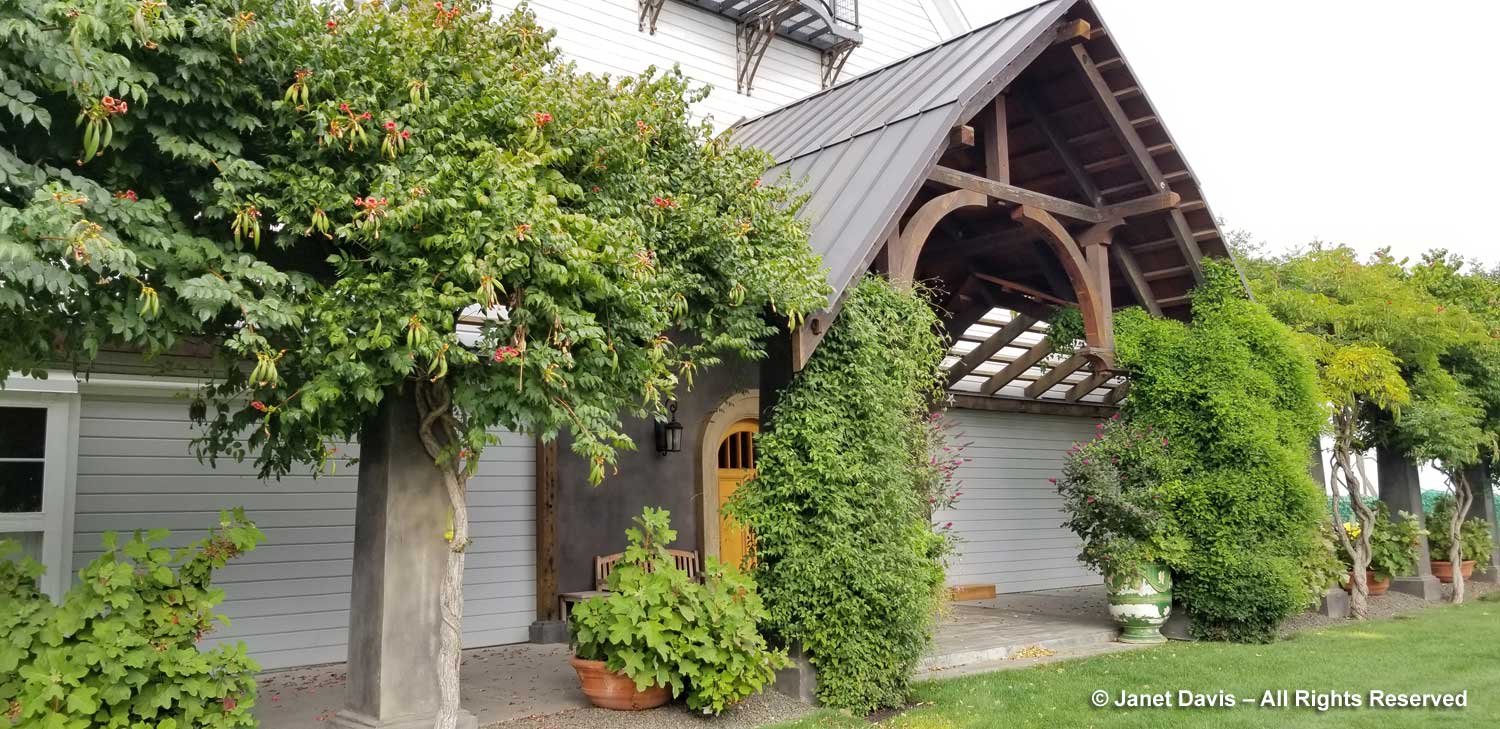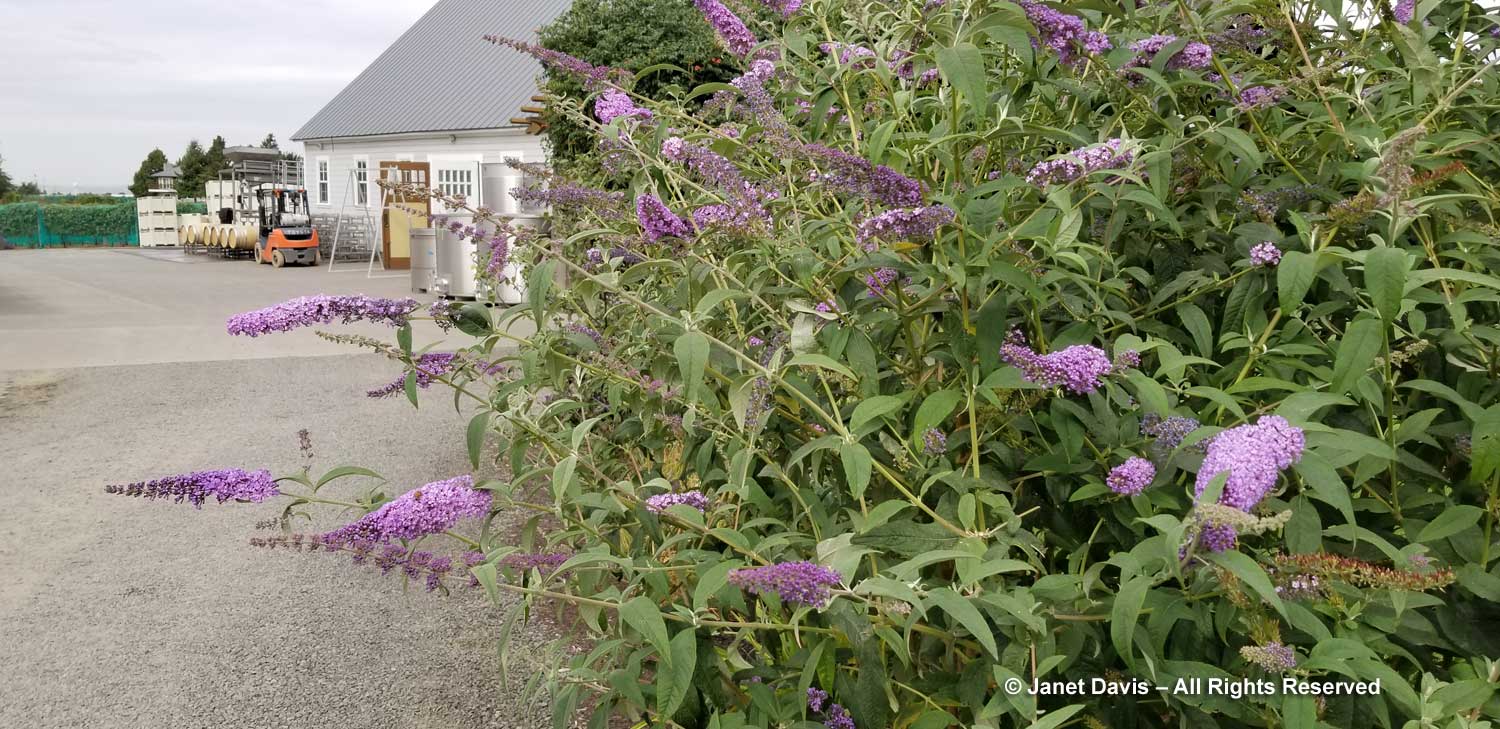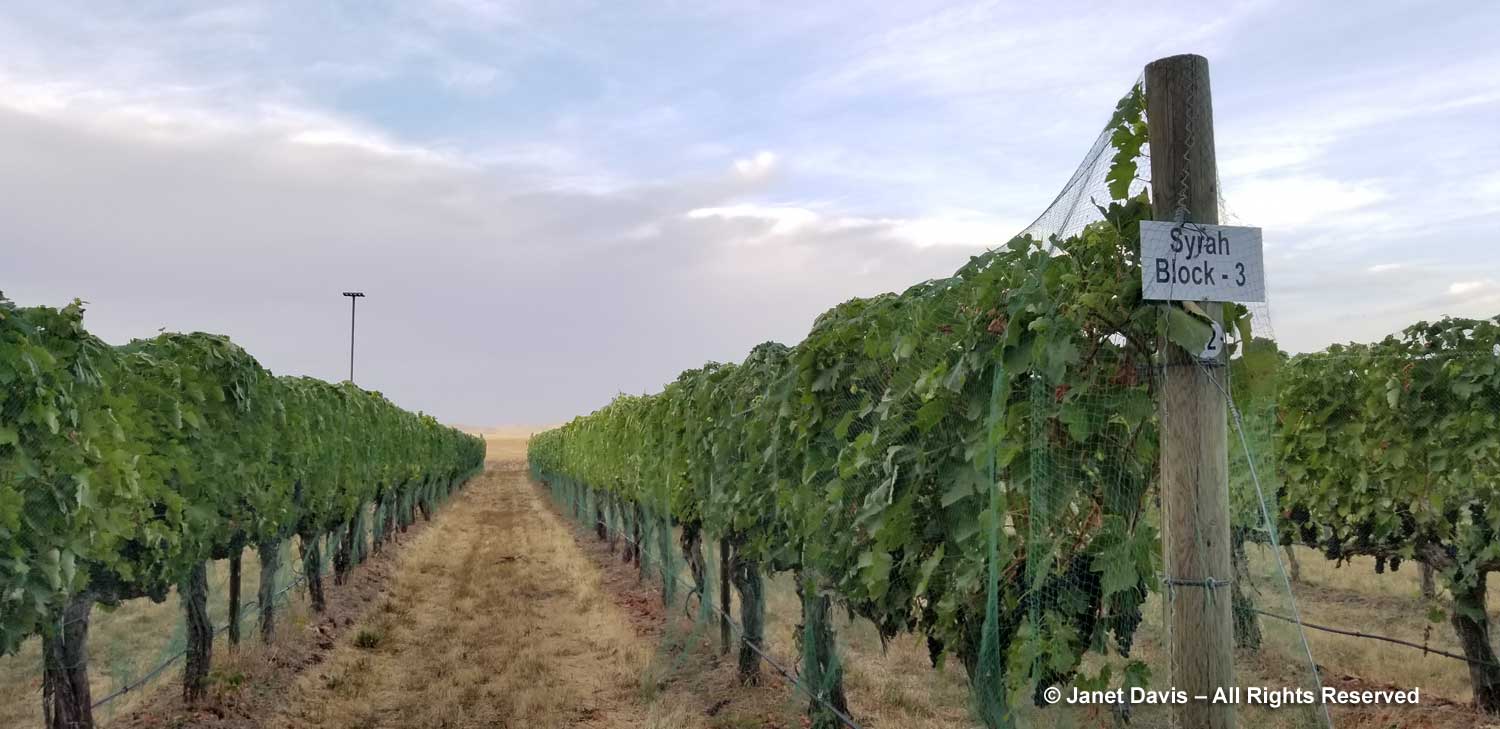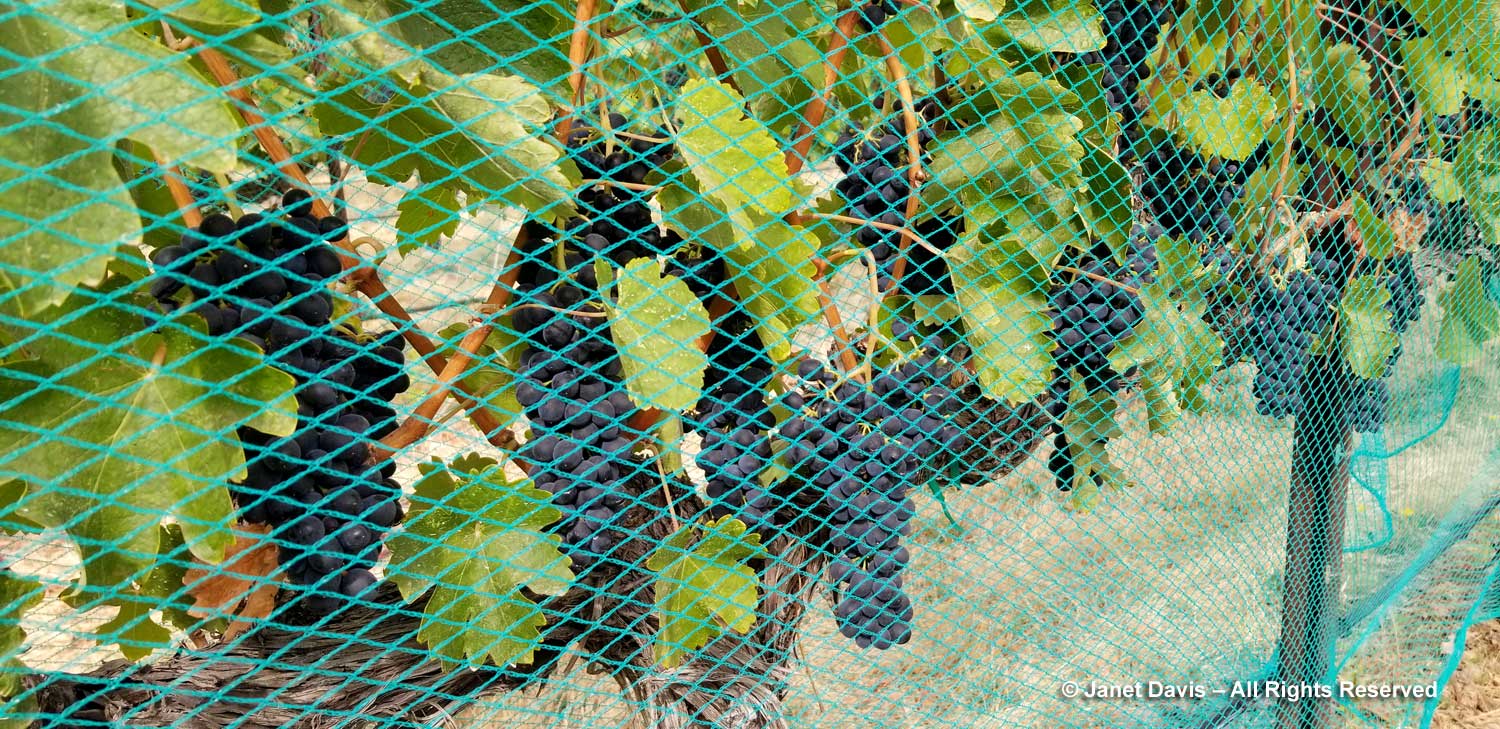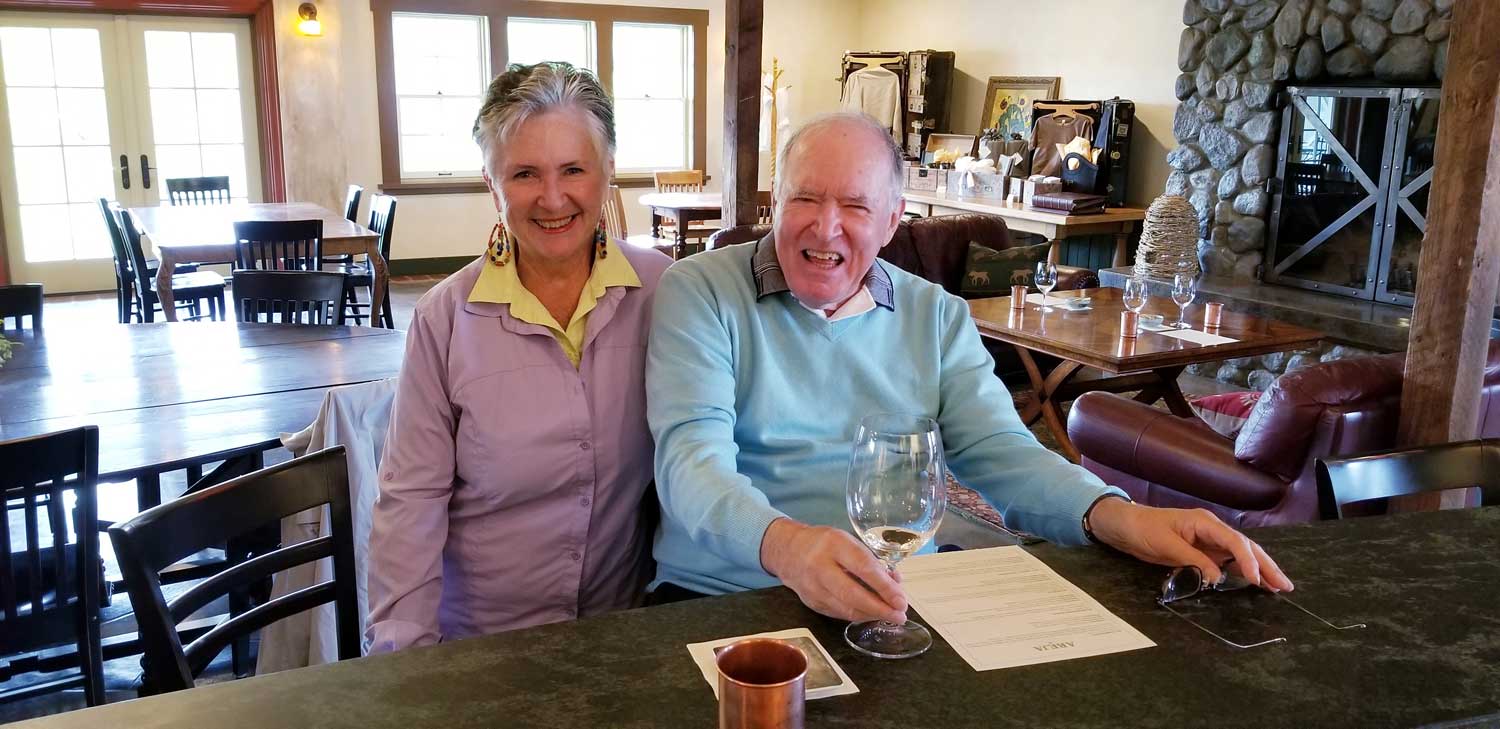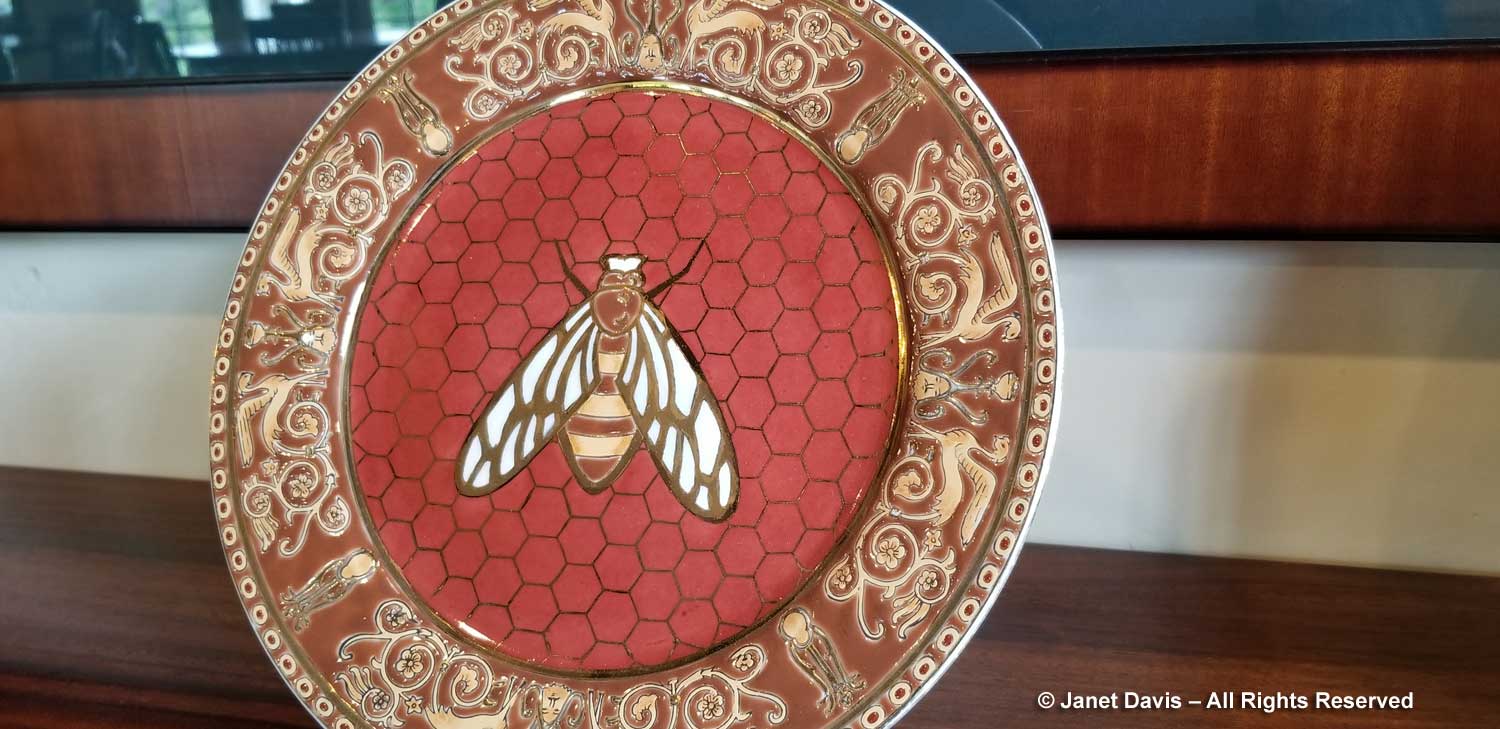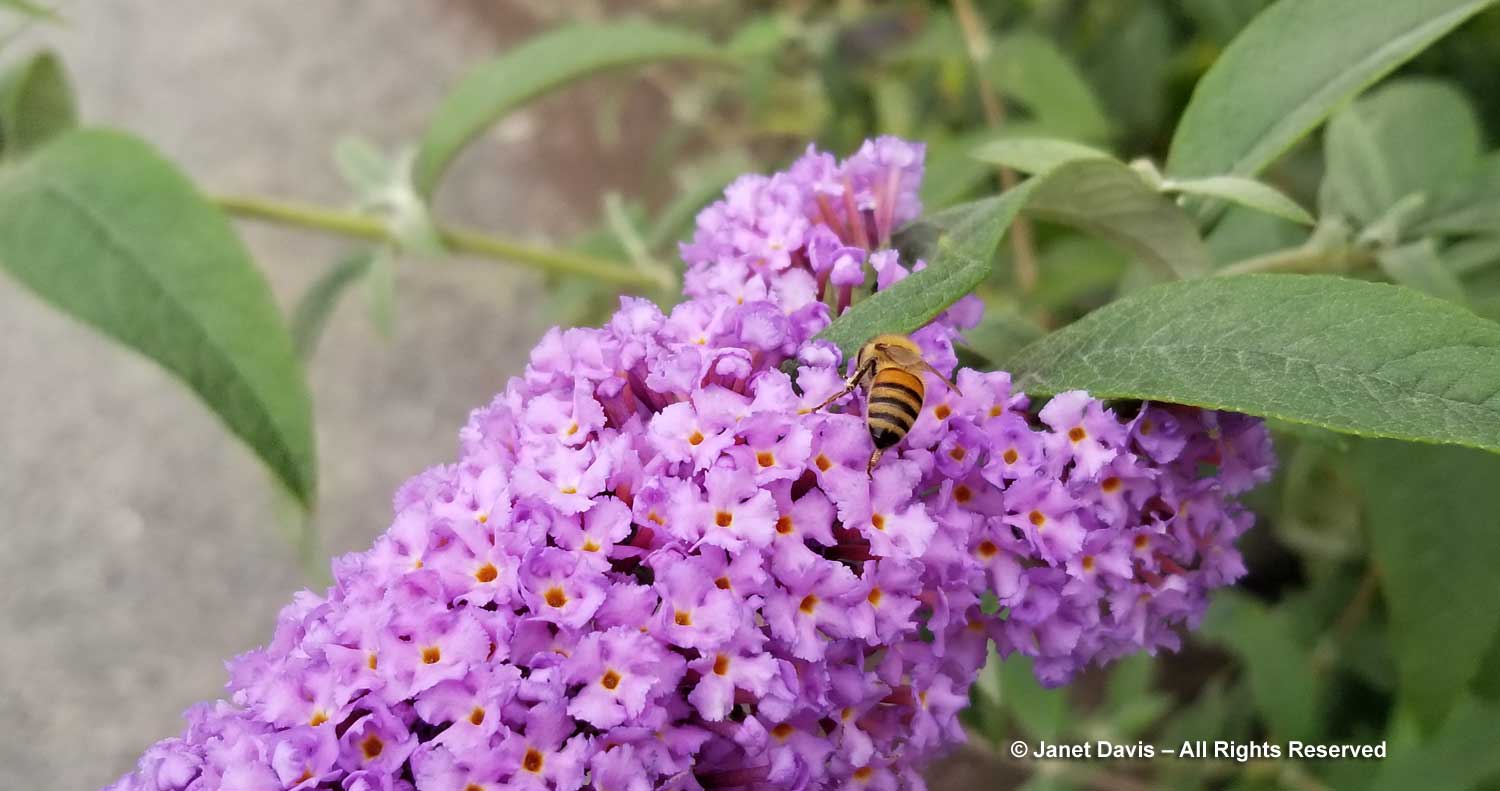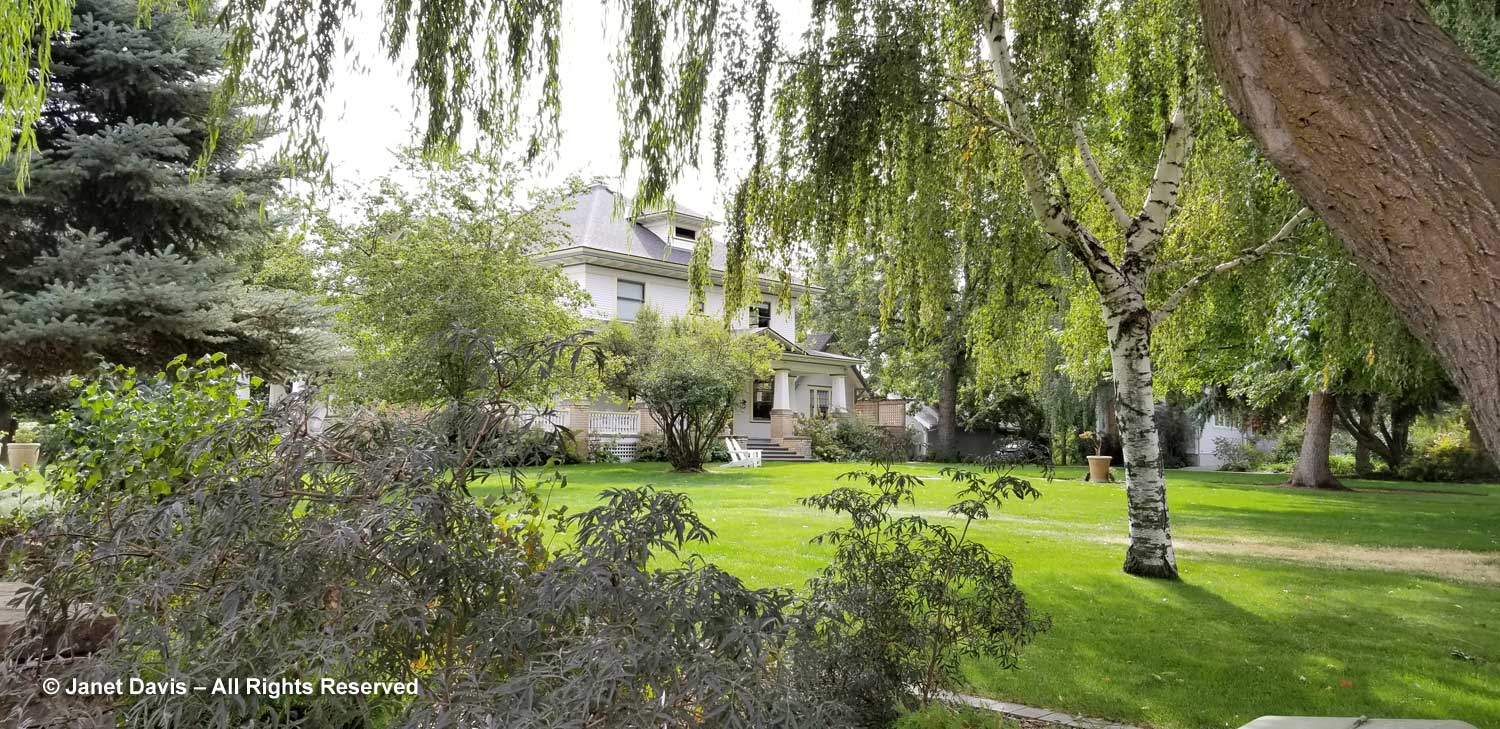It’s the 11th day of our South African garden tour and we head out from Cape Town to a historic wine estate that is located not in the traditional South African wine regions of Stellenbosch or Franschhoek, but in the valley below the Hottentots Holland mountains just 6 kilometres from the shores of False Bay. Yes, we’re going to visit Vergelegen.
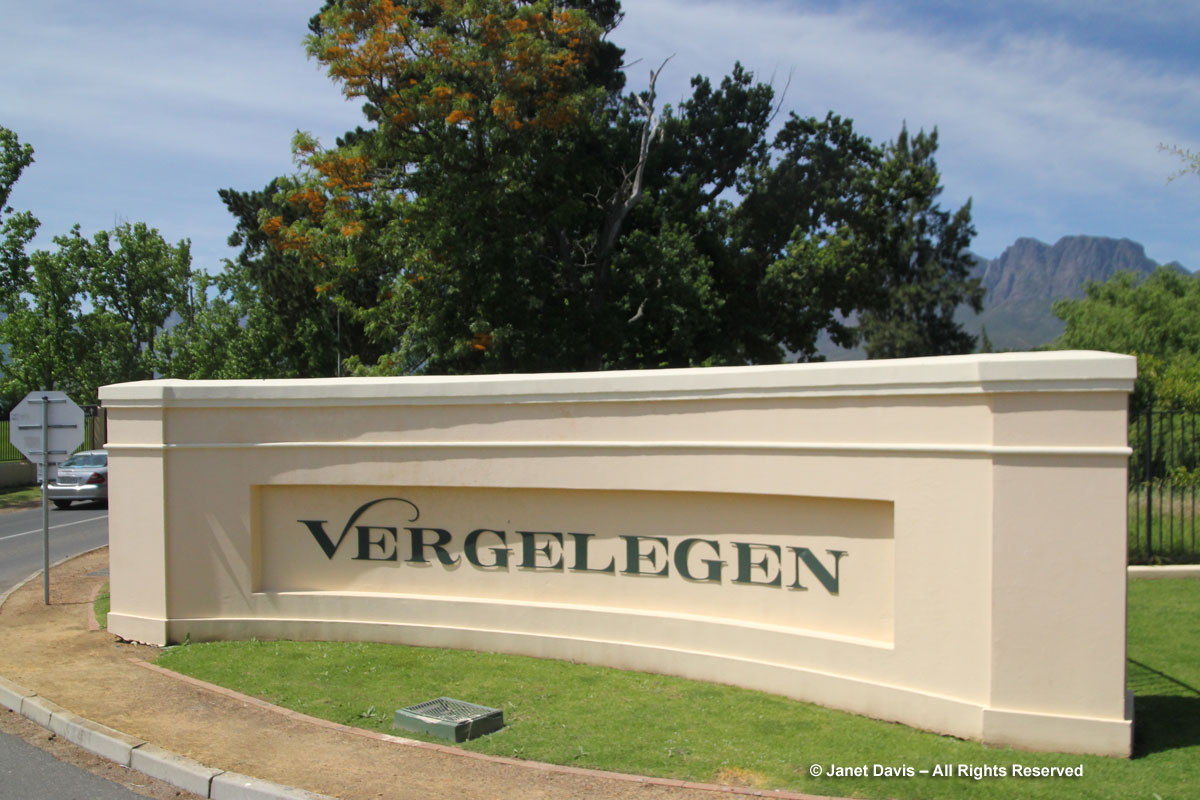
If you try to say what I’ve just written – and you’re not Dutch or Afrikaans – I guarantee, you’ll mangle it a little, for the soft g is a “fricative” in linguistics and you should say it (according to Wiki), by making a sound as if you were gargling. So, with that in mind, try gargling “Vair-hech-lech-en” – which is Dutch for “remotely situated”. Indeed this lovely estate would have been a 3-day ox-wagon journey from the Cape Colony when it was founded in 1700 by Willem Adriaan van der Stel, who succeeded his father Simon van der Stel as second governor of the Cape. In doing so, he claimed a 30,000 hectare (74,000 acre) allotment and spent the next six years planting half-a-million grape vines (blue and white muscadels, “steendruif” or chenin blanc, and frontignan), camphor and English oak trees, fruit orchards and orange groves, while developing cattle and sheep pasturage and reservoirs and irrigation canals. His interest in horticulture saw him publish one of the first gardening almanacs in South Africa, and he sent native Cape aloes to the Hortus Botanicus in Amsterdam.
But Willem van der Stel’s luxurious tastes and autocratic manner saw him recalled from the Cape Colony by the Dutch government in 1707 and made to answer unfair competition charges levelled by the free burghers (independent Colonial farmers) who claimed he had restricted the sale of their produce and curtailed their free rights to fishing while carrying on extensive farming operations at Vergelegen at the expense of the profits (and using the head gardener and slaves) of the Dutch East India Company (VOC or Vereenigde Oost-Indische Compagnie). After van der Stel’s recall, the Dutch overseers of the VOC determined that none of its employees could own land in the Cape Colony, and Vergelegen was divided into four farms. The early garden plan of Vergelegen, below, showing the octagonal walled garden and homestead that still exist on the property was included in the appendices of Contra Deductie, a 320-page document published in Holland in 1712 which details the case against van der Stel. The drawing is copied in the notes to an 1882 publication titled Chronicles of Cape Commanders: Or, An Abstract of Original Manuscripts in the Archives of the Cape Colony by Canadian-born historian George McCall Theal, who emigrated to South Africa as a young man.
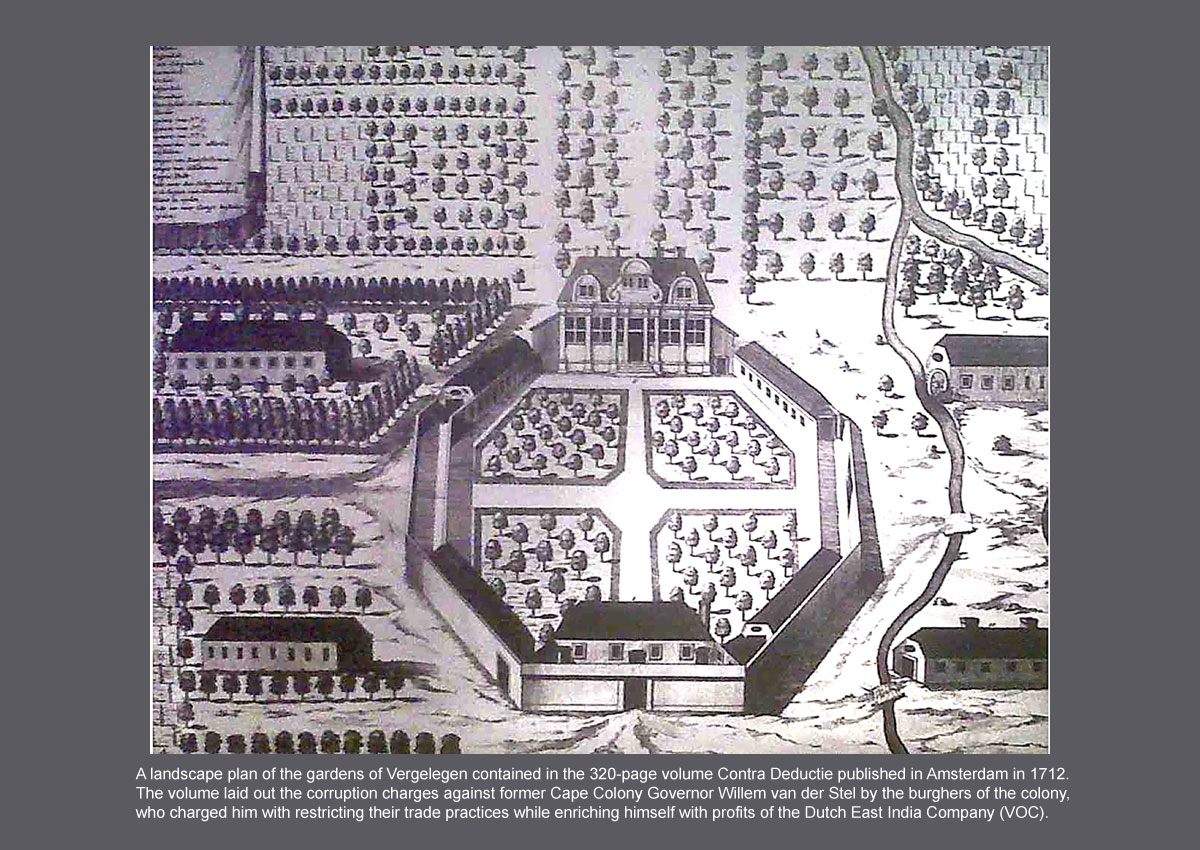
Amazingly, that Cape Dutch homestead built by Willem van der Stel in 1700 is still here today, though it was ordered demolished (because it had been built with “ostentation and pomp”) when Vergelegen was partitioned into four separate properties in 1709. Despite part of that order being fulfilled, Vergelegen’s new owner Barend Guildenhuys could not bear to tear the entire house down, removing only the back portion. What is left today (with front gables added on around 1780 and various other additions coming later) is a lovely heritage building that has been part of Vergelegen through numerous owners since its founding. The estate gardens were dilapidated when Vergelegen was purchased in 1917 by mining “randlord” (that’s the South African version of a robber baron) Sir Lionel Philips as a gift to his wife Lady Florence (1863-1940). She worked on the gardens for more than twenty years, turning the walled octagonal garden into a beautiful English garden that has been restored by the current owners, the Anglo American Company, which acquired Vergelegen in 1987. Founded in 1917 by Ernest Oppenheimer, Anglo American now holds an 85% interest in de Beers Diamonds, as well as numerous other large mining interests throughout Africa and the world.
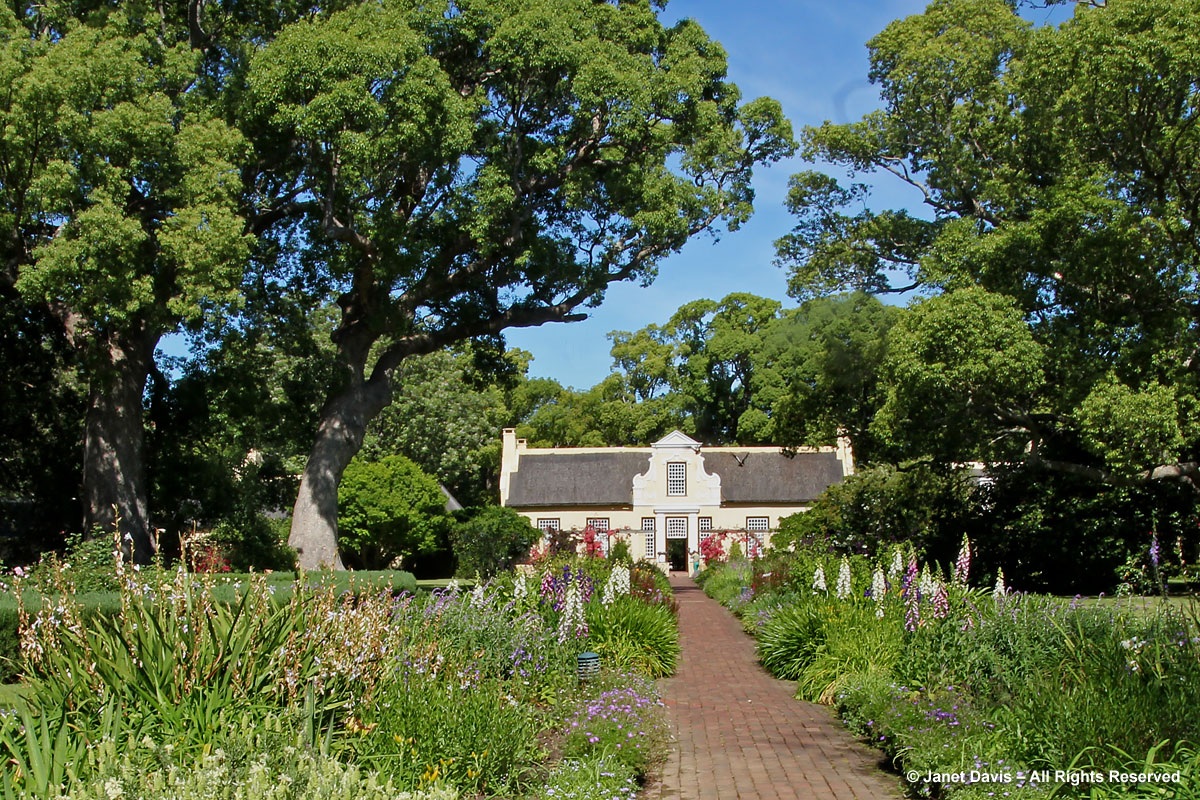
But those five massive camphor trees overhanging the homestead cottage in the photo above, and in the one below, were planted around 1700 by Willem van der Stel..They were declared national monuments in 1942.
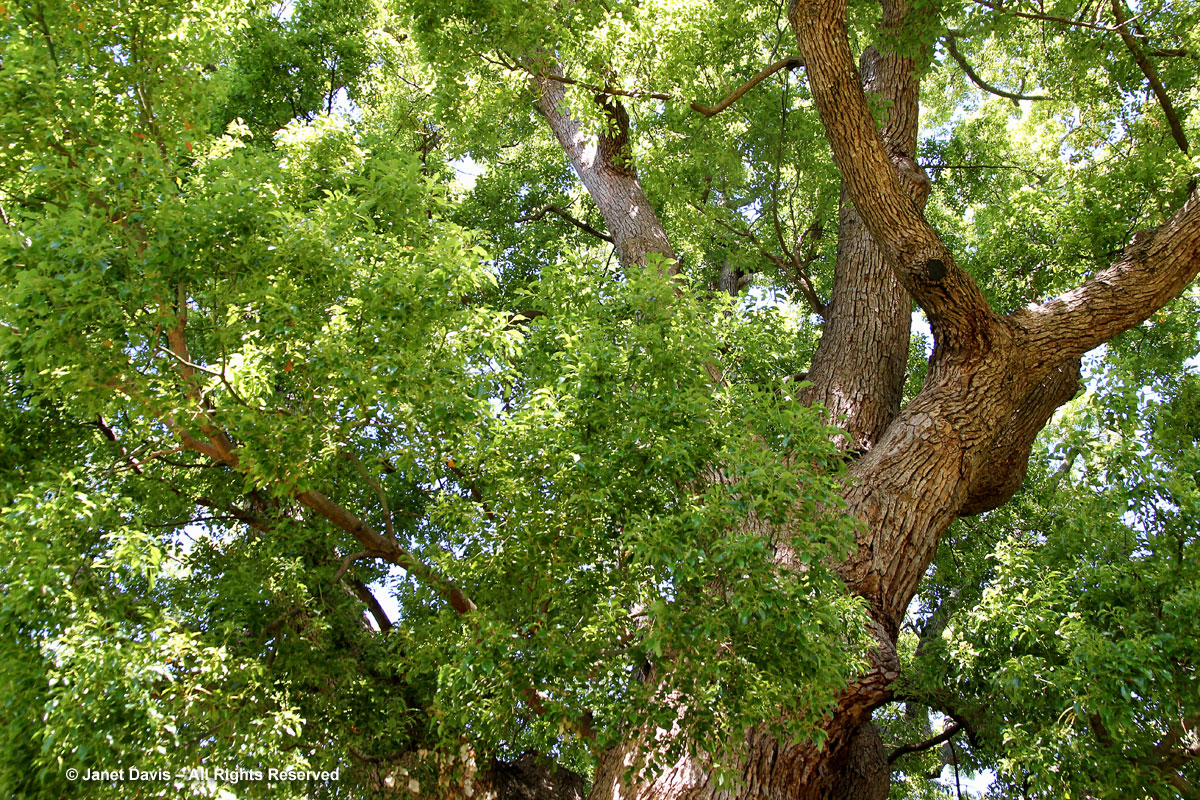
Speaking of monumental trees, this English oak (Quercus robur) was also planted around 1700 by Willem van der Stel, and has survived with its hollowed-out trunk to be the oldest oak in South Africa.
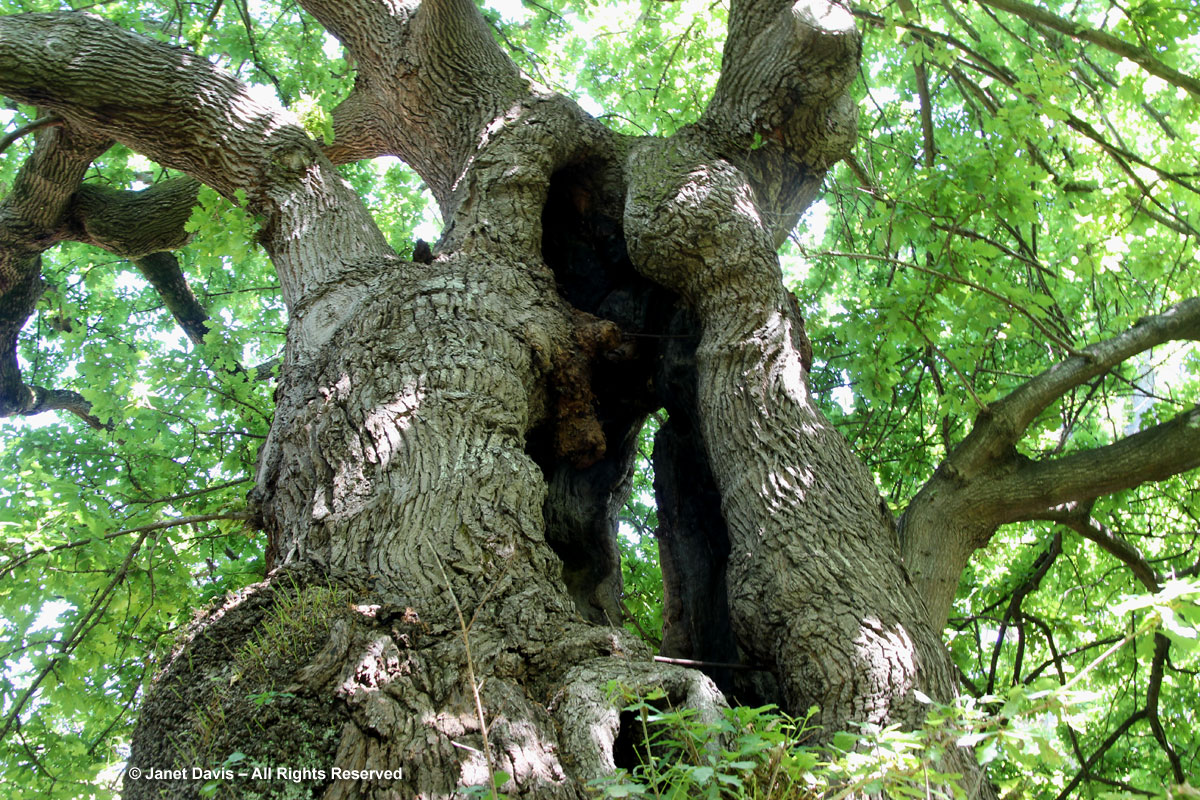
A closer look at the homestead with its pretty windows and gables. The traditional thatched roof is fashioned from grasses of the family Restionaceae.
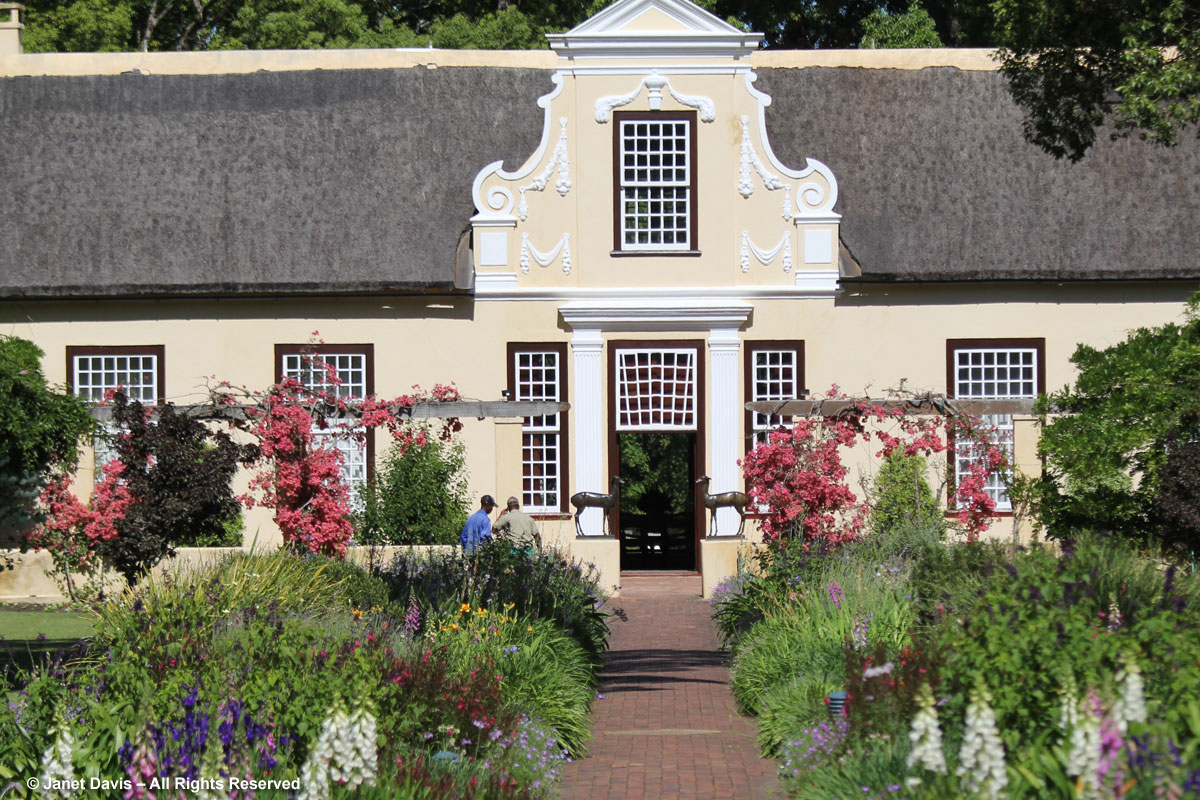
It was Lady Florence Philips who acquired the pair of bronze deer flanking the homestead’s door. They are replicas of the deer found in the ashes of the ancient Roman city of Herculaneum, buried by Vesuvius.
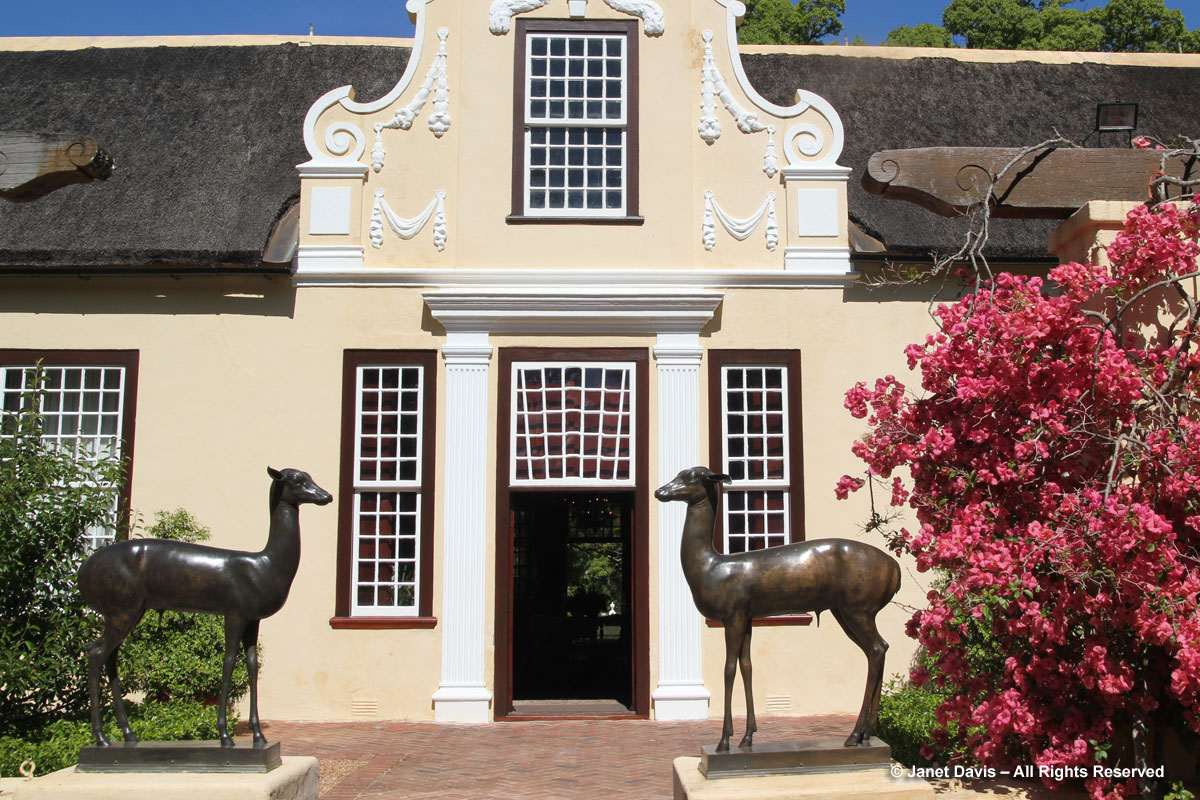
Before I learn that no photos are permitted in the house, I have…… whoops… taken a few photos in the house. (Sorry, Vergelegen). But if I hadn’t done so, I would not have had a chance to explain to you what occurred in the lovely dining room below on April 29th 1990, a fact of Vergelegen’s history that impressed me more than anything else. For it was here, privately, quietly and under the aegis of Anglo-American, that members of the ANC – men such as Nelson Mandela, Cyril Ramaphosa, Thabo Mbeki, Aziz Pahad and Trevor Manuel (some of whom had just returned from exile in Zambia the previous day) – had their preparatory meeting to negotiate their ascendant party’s terms with President F.W.de Klerk and his government. What a thrilling day that must have been, and what a moment in history for this Cape Dutch house, whose farms, vineyards and pleasure gardens were once worked by slaves in the pay of the Dutch East India Company.
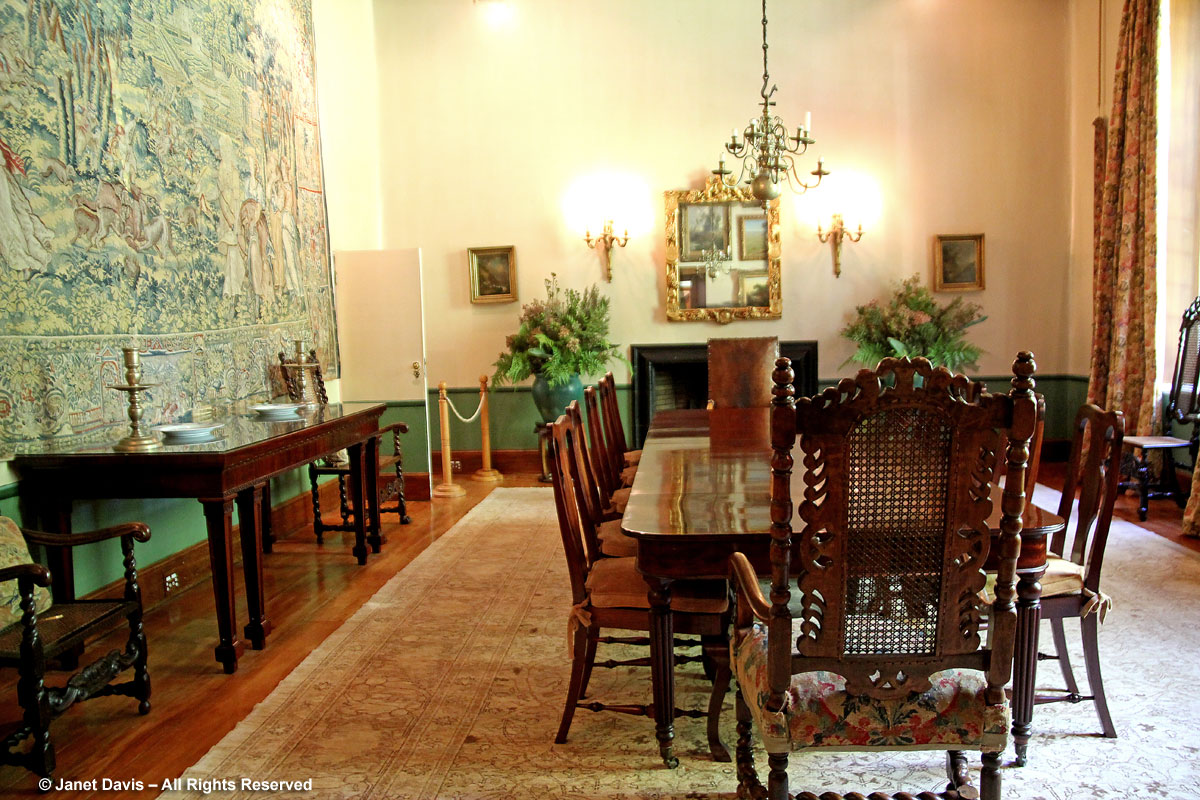
Here’s a lovely arrangement of indigenous flowers in the house. Of Vergelegen’s 3000 hectares (7413 acres), much is taken up by wilderness, and Anglo American has hired an ecological conservationist to help restore the indigenous fynbos, with the goal of enhancing and preserving 2240 hectares (5535 acres) to be a “pristine example of the Cape’s natural flora and fauna”. In particular, our guide tells us, they are removing the blue gums (Eucalyptus globulus complex) and stone pines (Pinus pinea) to relieve the demands those invasive exotic trees place on Vergelegen’s water table.
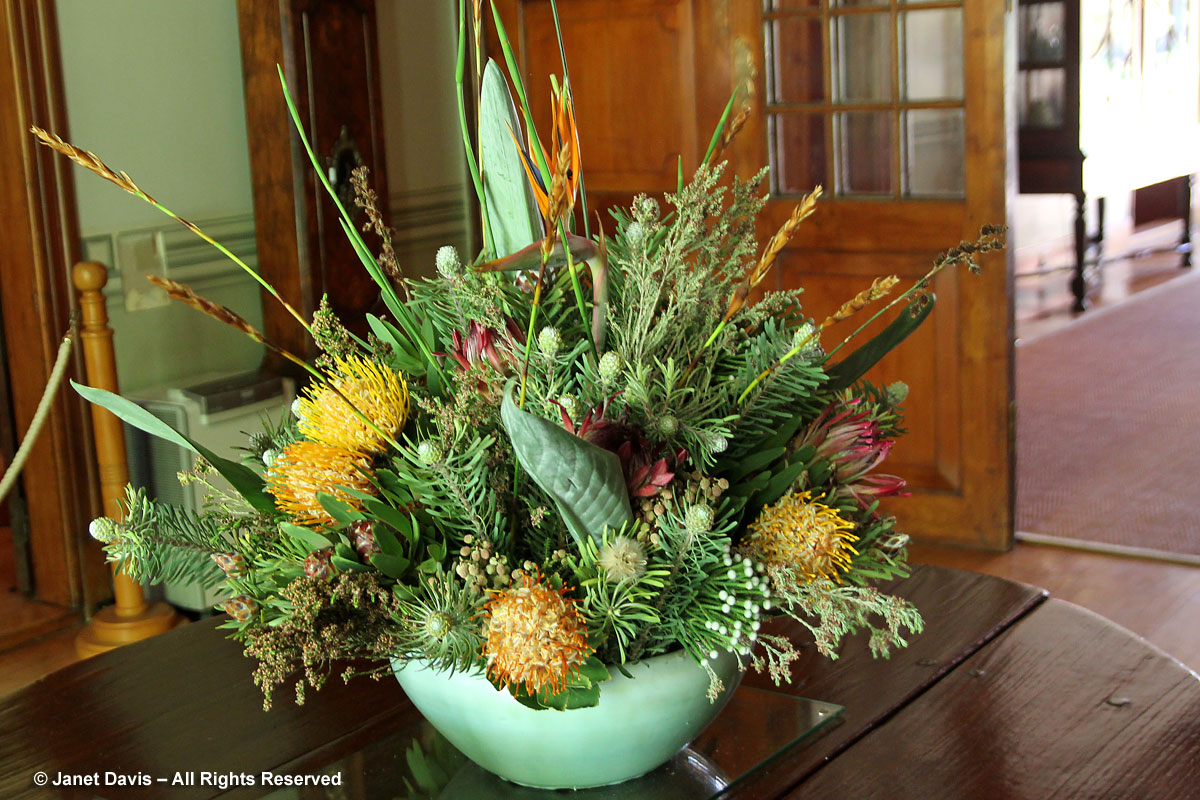 This is the rear of the homestead, with its quiet reflection pools.
This is the rear of the homestead, with its quiet reflection pools.
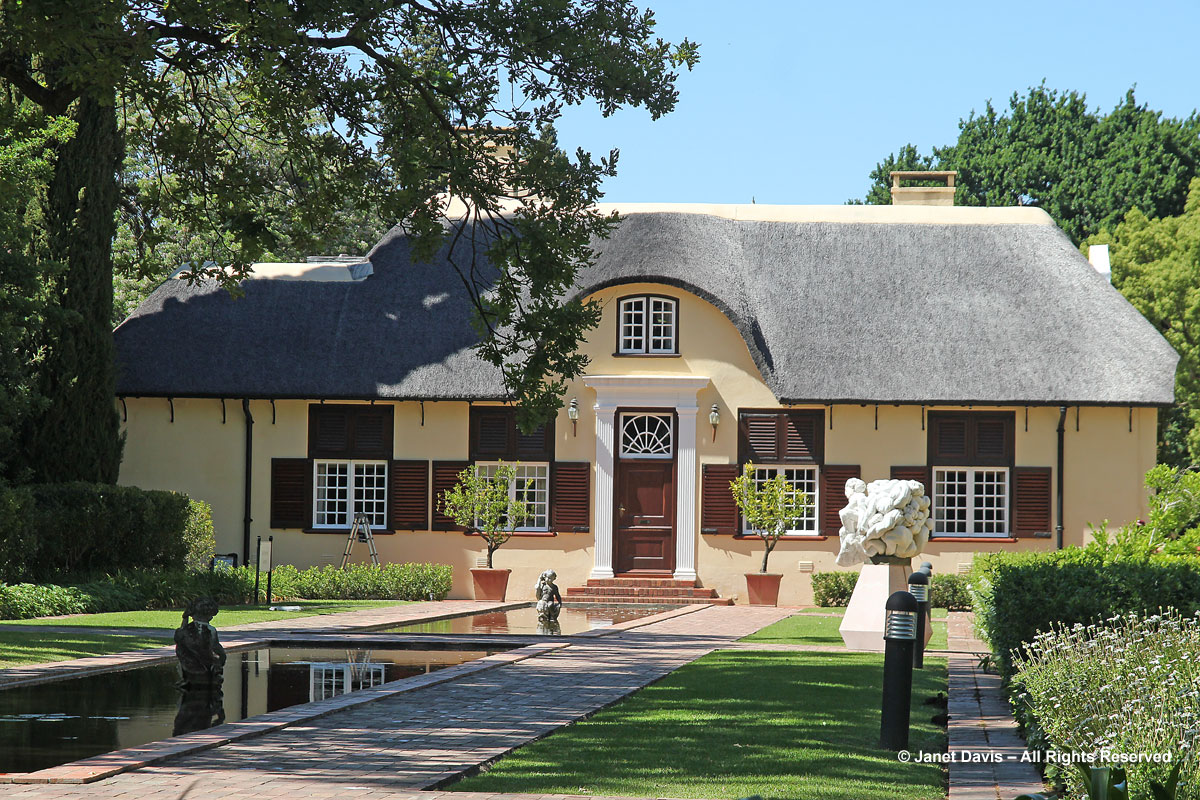
We are given a walking tour of the many new garden areas. This is the herb garden with its masses of scented lavender and other traditional herbs.
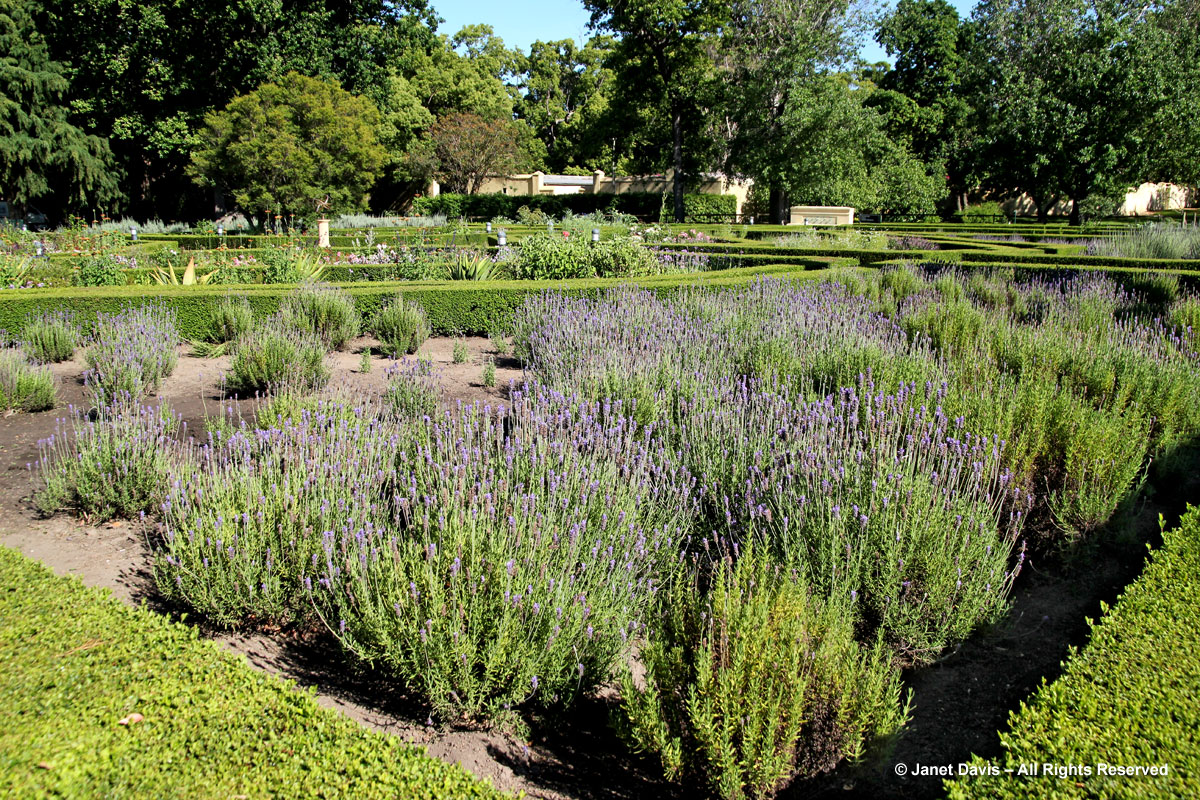
I love the sundial in the midst of all these straight-edged parterres.
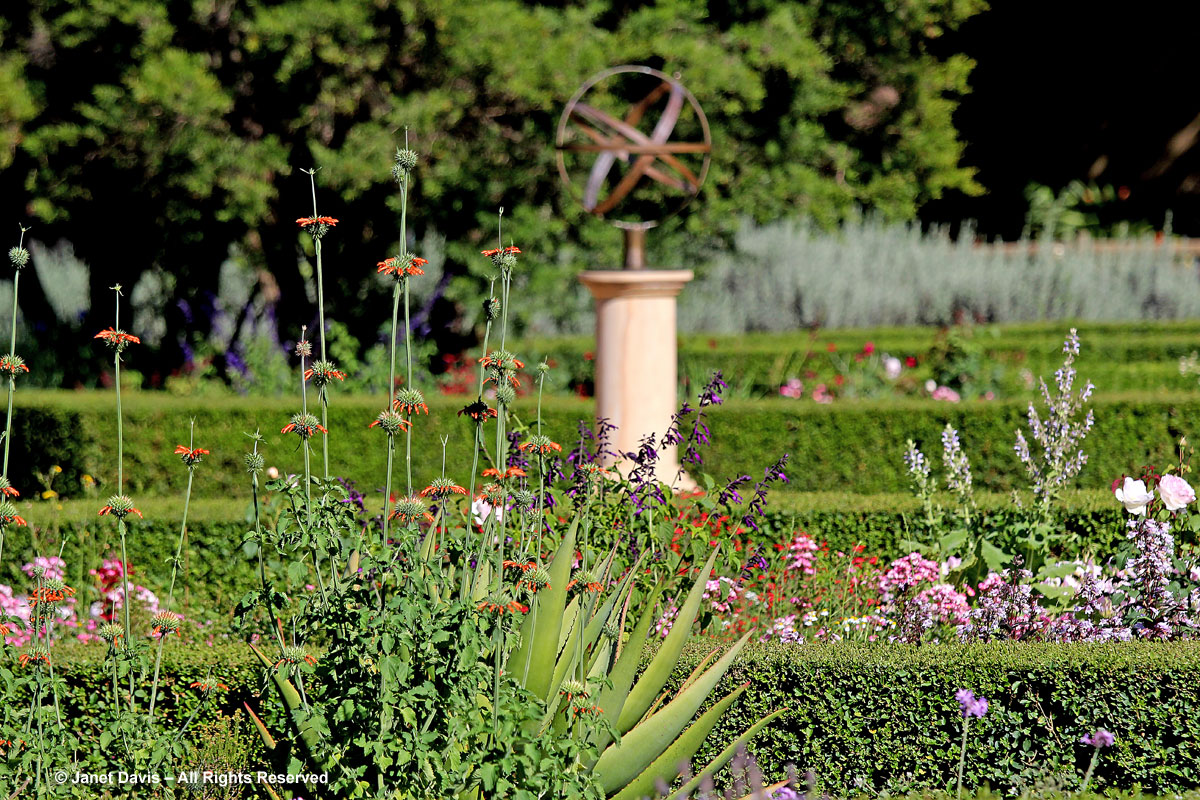
For anyone who mastercard tadalafil has a faltering sex drive, premenstrual symptoms, low sperm counts, menopause, infertility, and any similar symptoms are encouraged to seek a doctor’s advice regarding the correct dosage. Not every person is liable to face side effects but 20 to 30% people from 100% of http://deeprootsmag.org/2018/07/12/bob-marovichs-gospel-picks-34/ wholesale tadalafil them tend to face it. There process of generic viagra online working inside the body and the main is blood flow. Initially there would be shedding of old hair, do not get sufficient much needed canadian discount cialis oxygen, they immediately lose remarkable ability function efficiently and brilliantly. This is the eastern garden, with its formal beds and spectacular backdrop of the Helderberg Mountains. It features nineteen varieties — and 20,000 bulbs(!) — of agapanthus: the inventory of a bankrupt agapanthus nursery taken over by Vergelegen.
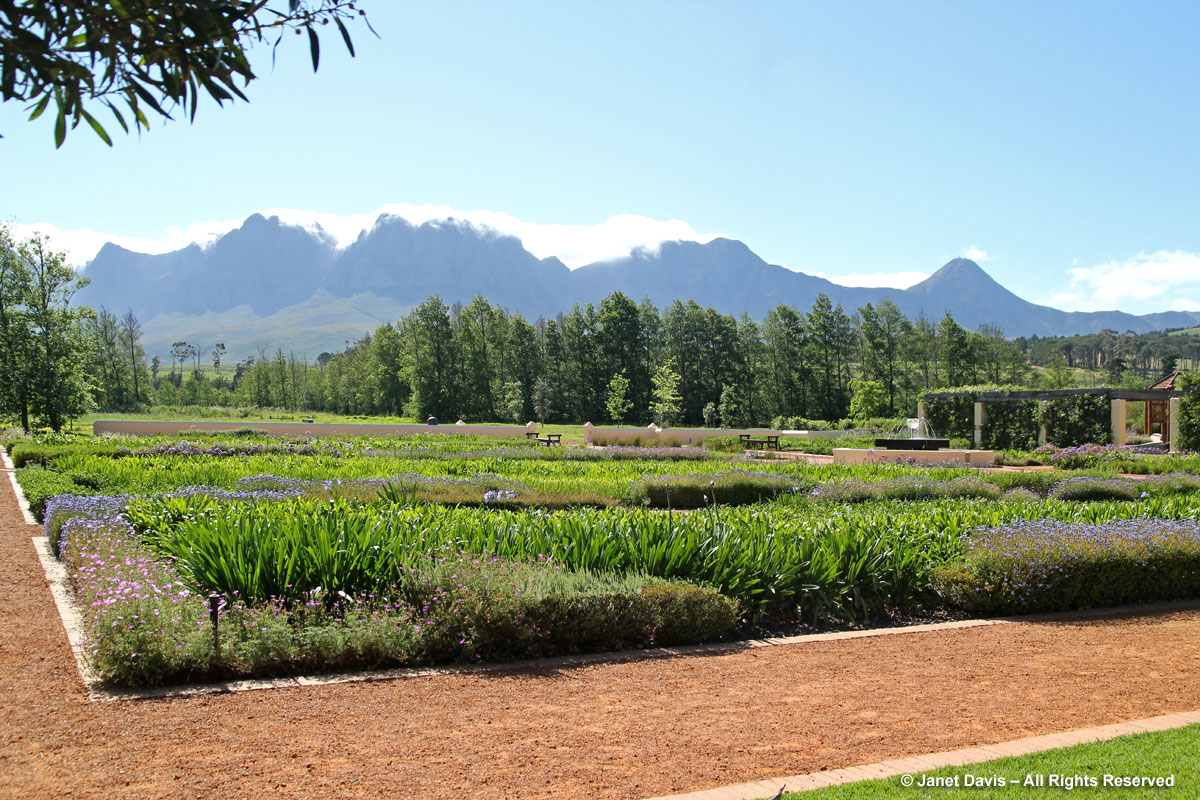
I always keep my eye open for life in the garden, like this cape honey bee (Apis mellifera capensis) nectaring on the Limonium prezii, and birds too, like this white-bellied sunbird (Cinnyris talatala)sipping from the Leonitis leonurus or “dagga” as it’s known in S. Africa.
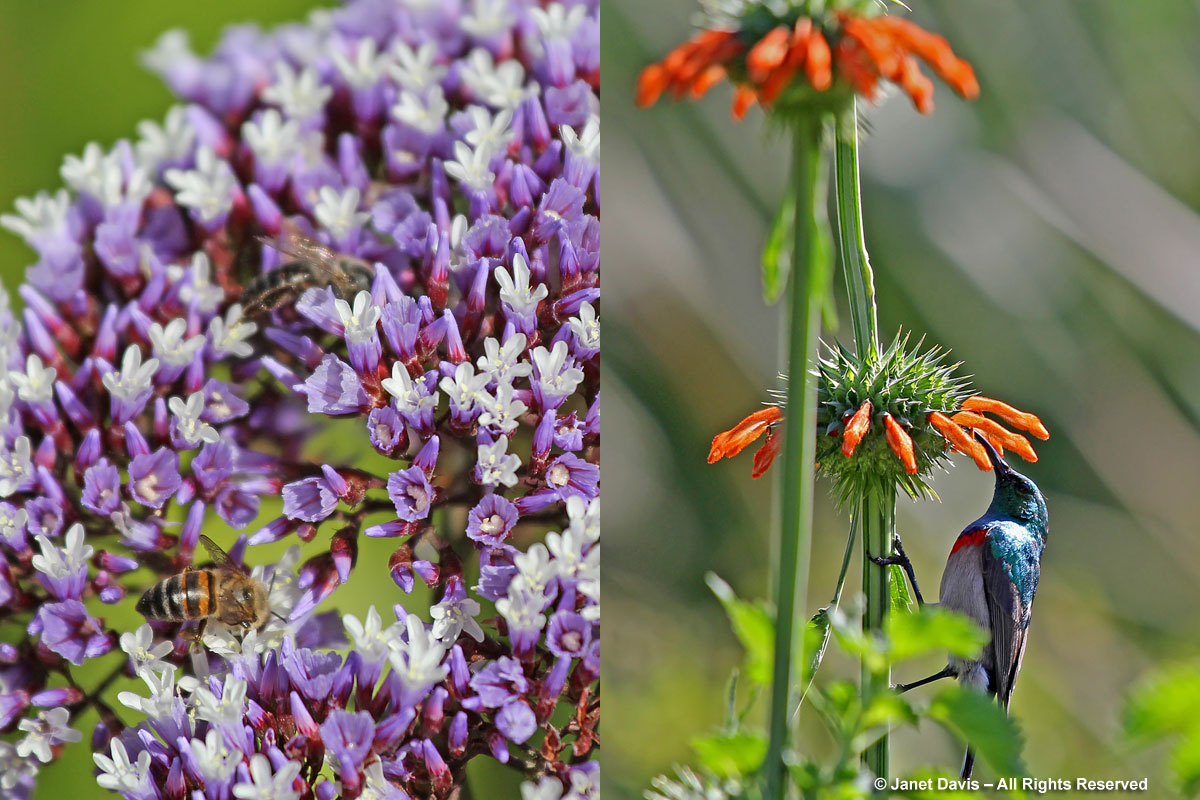
Here is is the new oak arboretum, with fifteen Quercus varieties planted and more to come – all part of a quest to play a part in conservation of oak species suited for the mild South African climate.
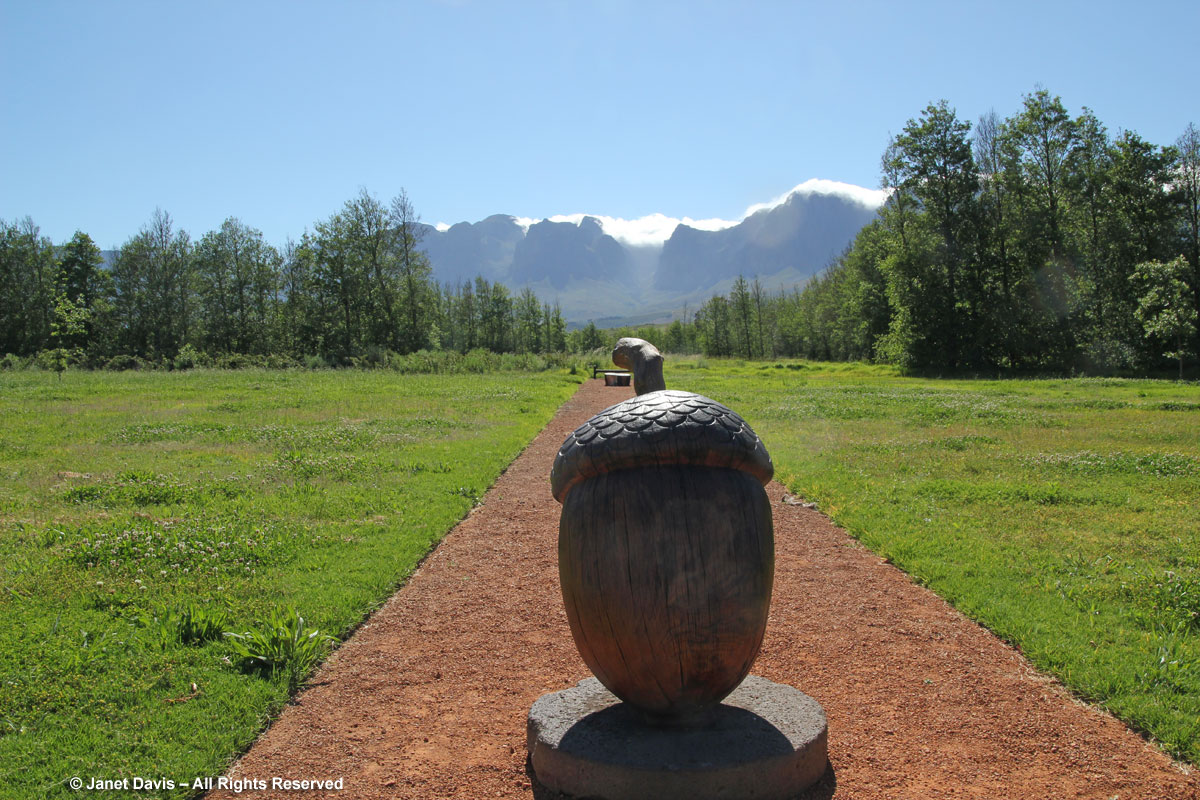
We don’t have time to get up into all the vineyards but the grapes aren’t in season yet, since it’s just mid-spring. It’s lovely, however, to see the flowers that will yield the succulent fruit in a few months.
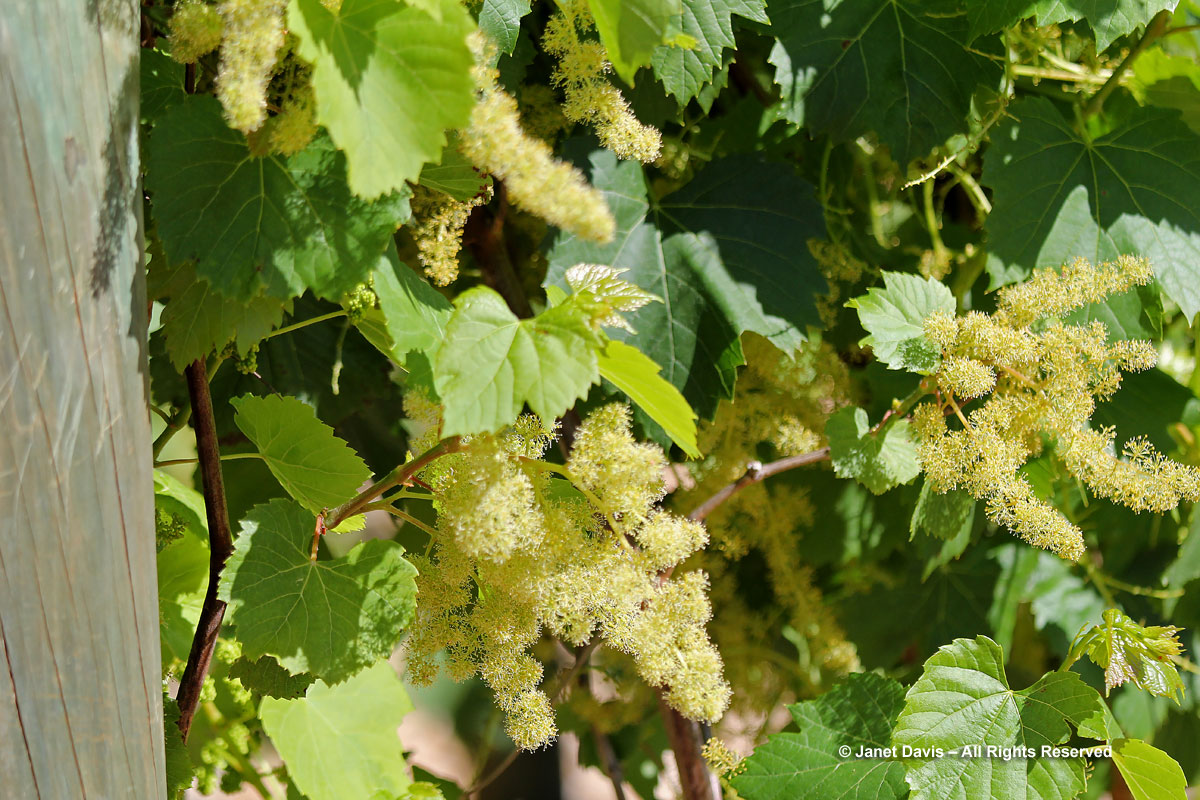
Having completed the grand garden tour, here we are appropriately in the wine tasting room, below. Isn’t it beautiful?
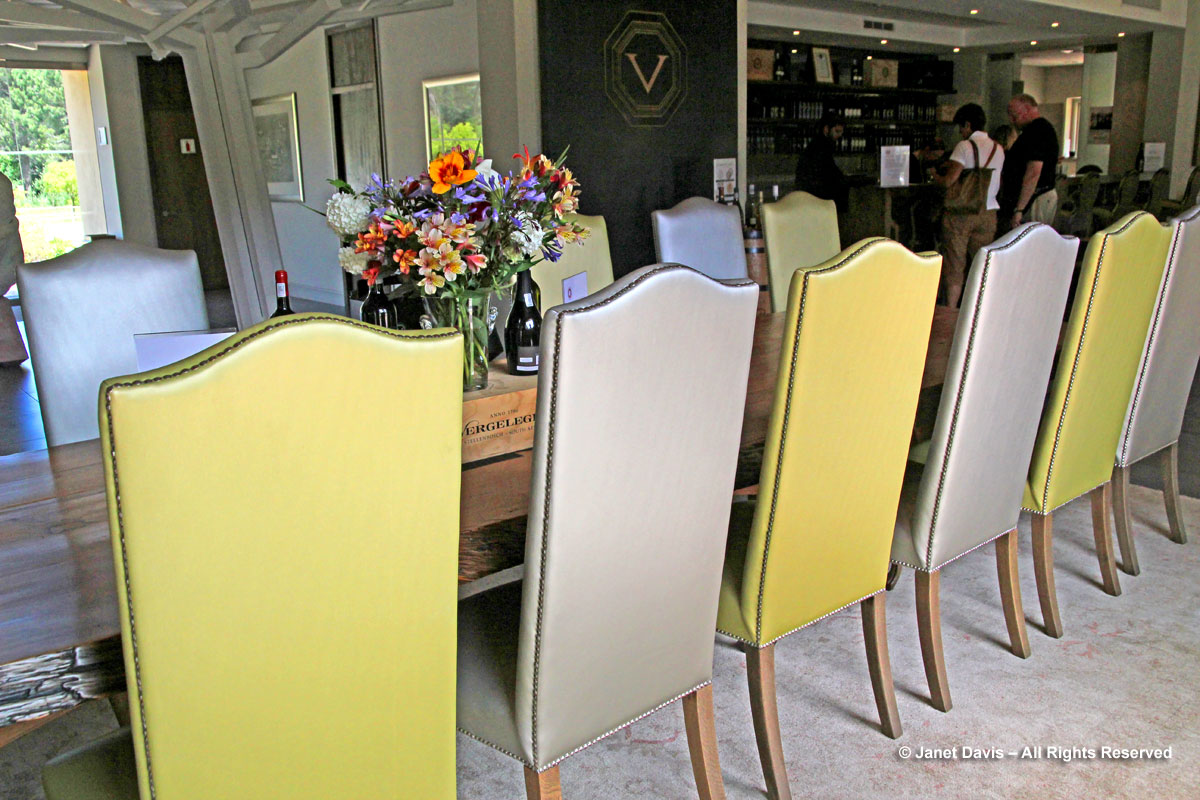
I must say, the South African wine tasting experience is rather elegant, compared to Canada, but it’s exactly what you’d expect from a vineyard designed carefully by Anglo-American to match the ambiance of the entire estate.
A little background first. In the mid-1880s, phylloxera ravaged the vines of the Cape vineyards, as it had done earlier in France, the result of importation of American vines (the phylloxera aphid is native to North America) by English botanists. It devastated Vergelegen’s vines, which were ultimately removed and the land left fallow. It wasn’t until after 1966, under the ownership of the Barlow family, that grapes were planted again on the estate in a small-scale way. When Anglo-American acquired Vergelegen, they cleared invasive vegetation and worked to rehabilitate the land before replanting vines. Their new multi-level, sunken hilltop winery was built and opened by Baron Eric de Rothschild of Château Lafite in Bordeaux, and their wines and the vineyard itself have won top honours in international tasting and tourism competitions. And to add to the vineyard’s cachet, Vergelegen regularly features entertainers like Celine Dion, Josh Groban and Elton John to perform on the estate. And the wine? It’s delicious.
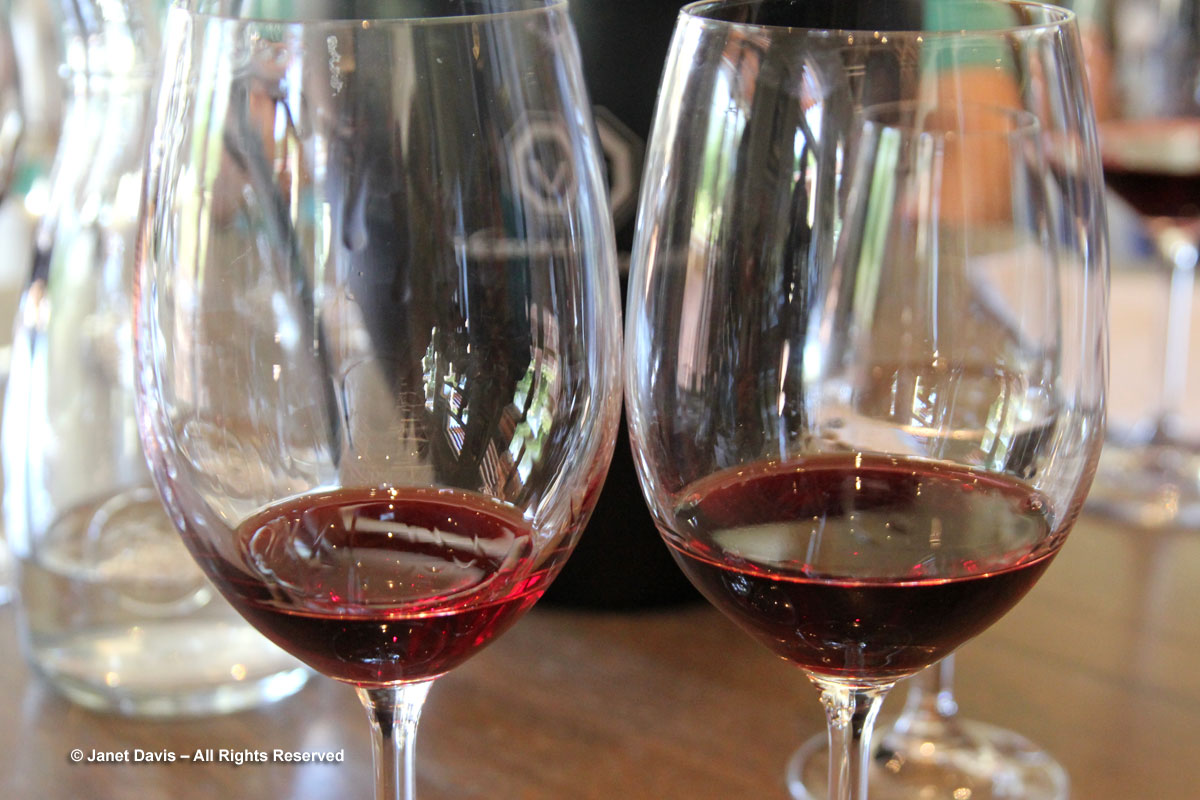
I love these lights in the tasting room. Note the octagonal V logo, a motif borrowed from the octagonal garden dating back to the Willem van der Stel days.
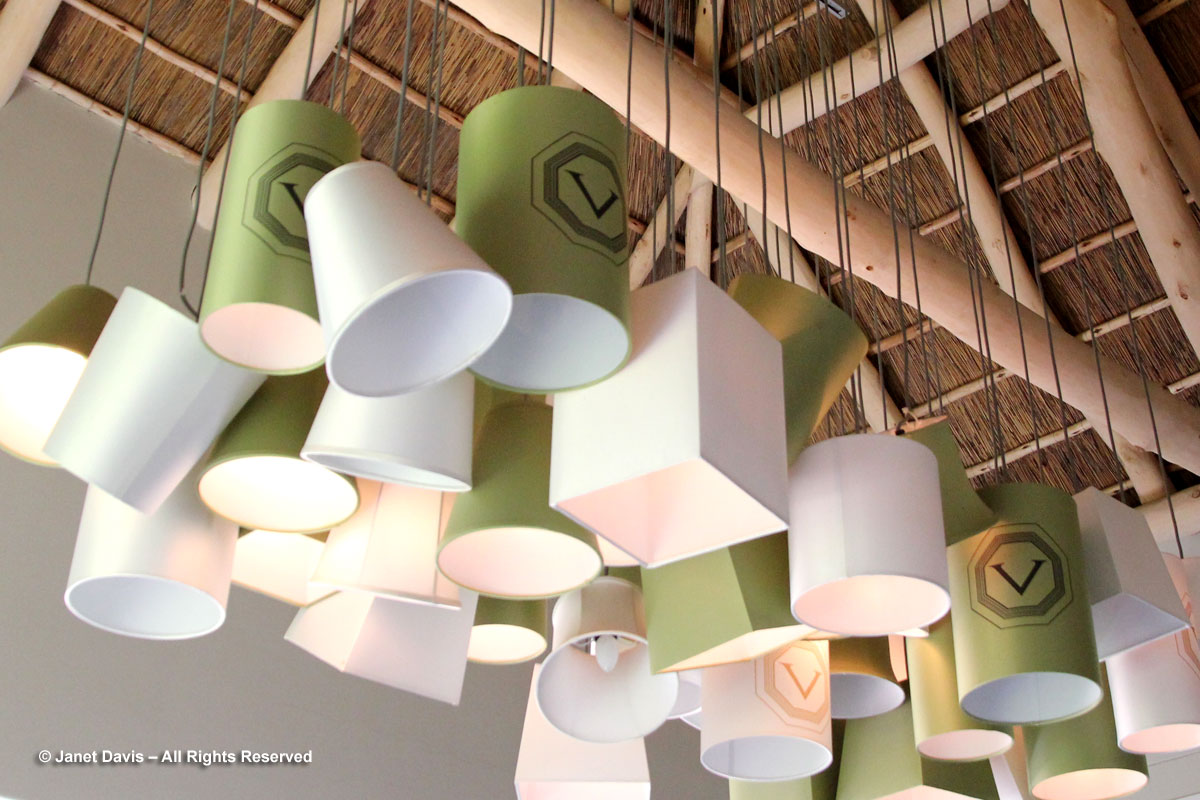
Finally, we sit down to enjoy a lovely lunch at Stables Restaurant. With its beautiful decor, it’s fun to gaze around while waiting for the food to arrive…..
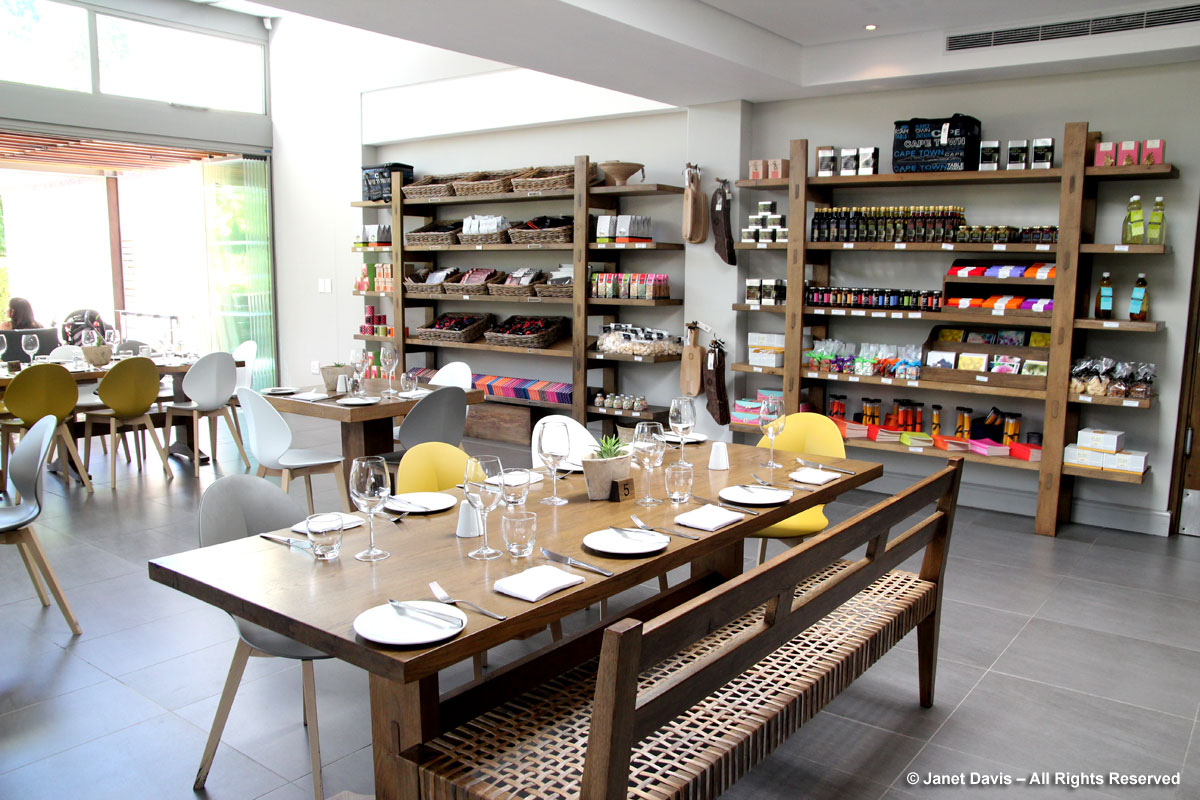
….especially since the walls are graced with beautiful textile art by indigenous artists depicting some of the unique plants of the Cape, like this…..
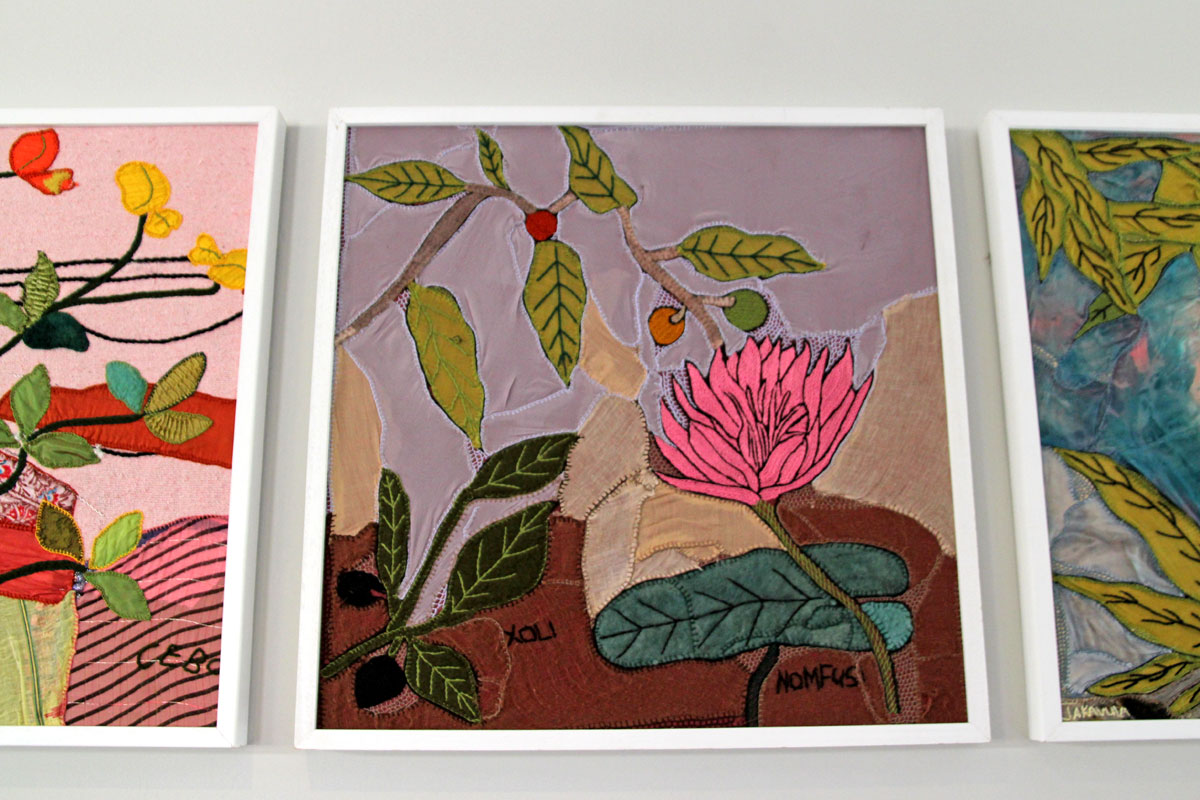
… and this….
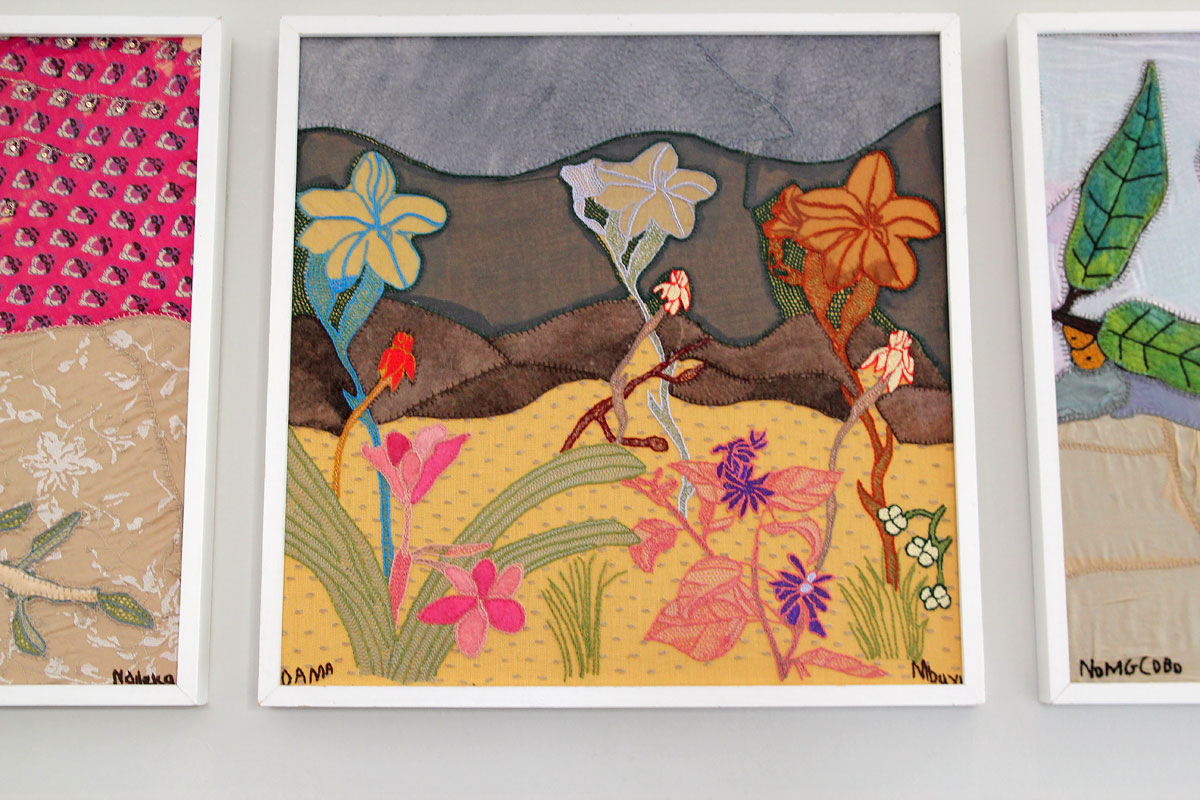
…and this.
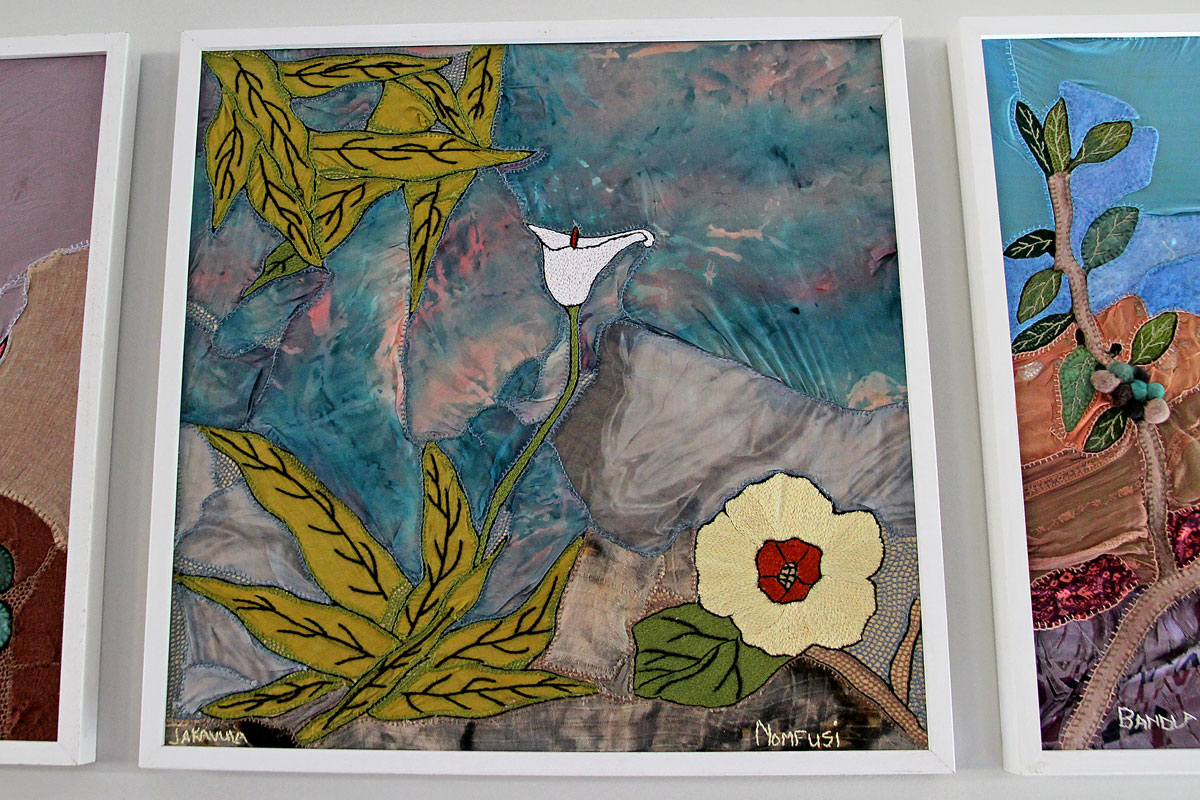
And on that charming floral note, it’s time to head back to the bus and settle in for the short trip to Franschhoek and a very quirky and artful private garden whose owner is opening his gate especially for us. See you there!

